TSO Commands
This chapter describes the syntax of TSO commands.
1. Overview
The following lists TSO commands.
| TSO Command | Description |
|---|---|
Activates a designated workstation. |
|
Allocates PED and PED-defined resources. |
|
Frees a PED and resources after use. |
|
Allocates a data set needed to run a program. |
|
Alters the current date. |
|
Alters the attributes of a job. |
|
Allocates a data set needed to run a program. |
|
Allocates a SYSOUT data set and configures print settings. |
|
Defines a list of attributes of a data set. |
|
Executes an external program. |
|
Cancels execution of a job. |
|
Disconnects a specified workstation from the AIM. |
|
Copies a data set. |
|
Copies a data set or a member of a data set. |
|
Copies tape volumes. |
|
Creates a data set or adds it to a catalog. |
|
Schedules a job. |
|
Copies files in a floppy disk to a general disk volume or vice versa. For syntax check only in OpenFrame. |
|
Copies files in a tape volume to a general disk volume and vice versa. |
|
Deletes a member of a sequential data set or PDS from the catalog. |
|
Defines attributes of a data set. |
|
Displays the status of a data set. For syntax check only in OpenFrame. |
|
Deletes a data set or a data set member. |
|
Deletes a data set or a data set member or removes a data set from the catalog. |
|
Deletes files on a floppy disk. For syntax check only. |
|
Cancels and deletes a job being executed. |
|
Drops monitoring of an event specified by the EVENT and WAIT commands. |
|
Starts a DSN session. |
|
Begins to monitor an event. |
|
Invokes a command procedure. |
|
Processes the interactive screen with the PSAM map. |
|
Invokes a PSAM map. |
|
Executes an external program. |
|
Invokes a command procedure. |
|
Executes fexport. |
|
Executes an external program. |
|
Executes fimport. |
|
Frees a data set allocated by the ALLOCATE and ATTRIB commands. |
|
Frees a data set allocated by the ASCFILE or DFNFATR commands. |
|
Disables a specified workstation. |
|
Initializes a floppy disk. For syntax check only. |
|
Initializes a tape volume. |
|
Adds or removes a data set to a work library. |
|
Displays the catalog information. |
|
Ends a TSO session. |
|
Allocates a SYSOUT data set and configures printer settings. |
|
Displays the content or attributes of a data set. |
|
Displays information about a volume and its files. For syntax check only. |
|
Does nothing. This command is specified with a label where the If command or GOTO command is used to branch. |
|
Copies a member of a data set or Unix file to another data set or a file. |
|
Controls output. For syntax check only. |
|
Controls the screen with the PSAM map. |
|
Allocates a SYSOUT data set and outputs the content of a data set with a print device. |
|
Sets how you want to use the terminal with your user profile. |
|
Prints the content of a data set with a print device. |
|
Obtains the form overlay pattern from a data set. For syntax check only. |
|
Resumes execution of a job that has been on hold. For syntax check only. |
|
Renames a data set or a PDS member. |
|
Renames a data set or a PDS member. |
|
Runs user applications. DSN subcommand. |
|
Sends message to another user. |
|
Copies all or part of a stream or data set to another stream or data set. |
|
Sends messages to a specified workstation connected to an application or AIM. |
|
Aligns an input data set or selects specific records and saves the result in the output data set. |
|
Outputs batch job status to terminal. For syntax check only. |
|
Stops a writer that is printing, queued, or on hold. For syntax check only. |
|
Starts a writer that is stopped. For syntax check only. |
|
Executes a job. |
|
Updates the catalog information of a VSAM data set. |
|
Suspends execution of a script until at least one of specified events is raised. |
Supported Commands By Platform
The following shows supported and unsupported commands by platform (MVS, VOS3, MSP, and XSP).
| TSO Command | MVS | VOS3 | MSP | XSP |
|---|---|---|---|---|
ACTNET |
O |
O |
O |
O |
AIMALLOC |
X |
X |
O |
O |
AIMFREE |
X |
X |
O |
O |
ALLOCATE |
O |
O |
O |
O |
ALTDATE |
X |
X |
X |
O |
ALTJOB |
X |
X |
X |
O |
ASCFILE |
X |
X |
X |
O |
ASCLP |
X |
X |
X |
O |
ATTRIB |
O |
O |
O |
O |
CALL |
O |
O |
O |
O |
CANCEL |
O |
O |
O |
O |
CLSTWS |
X |
X |
X |
O |
COPY |
O |
O |
O |
O |
CPYFILE |
O |
O |
O |
O |
CPYTAP |
X |
X |
X |
O |
CRTFILE |
O |
O |
O |
O |
CRTJOBS |
X |
X |
X |
O |
CVTFPD |
X |
X |
X |
O |
CVTTAP |
X |
X |
X |
O |
DELETE |
O |
O |
O |
O |
DFNFATR |
X |
X |
X |
O |
DISPLAY |
O |
O |
O |
O |
DLTDS |
X |
X |
X |
O |
DLTFILE |
O |
O |
O |
O |
DLTFPD |
X |
X |
X |
O |
DLTJOB |
X |
X |
X |
O |
DROP |
X |
X |
X |
O |
DSN |
O |
O |
O |
O |
EVENT |
X |
X |
X |
O |
EXCCL |
X |
X |
X |
O |
EXCEFI |
X |
X |
X |
O |
EXCEFW |
X |
X |
X |
O |
EXCPGM |
X |
X |
X |
O |
EXEC |
O |
O |
O |
O |
FEXPORT |
X |
X |
O |
O |
FETCH |
△ |
X |
X |
X |
FIMPORT |
X |
X |
O |
O |
FREE |
O |
O |
O |
O |
FREFILE |
X |
X |
X |
O |
INANET |
X |
X |
O |
O |
INTFPD |
X |
X |
X |
O |
INTTAP |
X |
X |
X |
O |
LIBRARY |
O |
O |
O |
O |
LISTCAT |
O |
O |
O |
O |
LOGOFF |
O |
O |
O |
O |
LPALLOC |
X |
X |
X |
O |
LSTFILE |
X |
X |
O |
O |
LSTVOL |
X |
X |
O |
O |
NOP |
X |
X |
X |
O |
OCOPY |
O |
X |
X |
X |
OUTPUT |
O |
O |
O |
O |
PANEL |
X |
X |
X |
O |
PRINTOFF |
O |
O |
O |
O |
PROFILE |
O |
O |
O |
O |
PRTFILE |
X |
X |
O |
O |
PUTOVL |
X |
X |
O |
O |
RELEASE |
X |
X |
O |
O |
RENAME |
O |
O |
O |
O |
RNMFILE |
X |
X |
O |
O |
RUN |
O |
O |
O |
O |
SEND |
O |
O |
O |
O |
SMCOPY |
O |
X |
X |
X |
SNDTMSG |
X |
X |
X |
O |
SRTDS |
X |
X |
X |
O |
STATUS |
O |
X |
X |
X |
STPWTR |
X |
X |
O |
O |
STRWTR |
X |
X |
O |
O |
SUBMIT |
O |
O |
O |
O |
VERIFY |
X |
X |
O |
O |
WAIT |
X |
X |
X |
O |
|
FETCH command works only when executing CLIST through the ISPF service of MVS. It does not work in TSO Batch mode. |
2. ACTNET Command
Activates a designated workstation.
Syntax

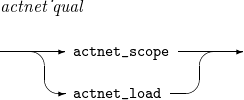
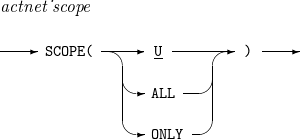
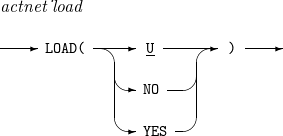
| Item | Description |
|---|---|
id |
Name of a workstation to activate. |
Operands
The following table describes the operands mentioned previously.
| Operand | Description |
|---|---|
ID |
Specifies the name of a workstation to be activated. |
SCOPE |
Specifies the scope of a workstation to be activated. Only ALL is supported in OpenFrame. Other options are for syntax check only. |
LOAD |
Specifies loading conditions for a workstation to activate. For syntax check only. |
Example
The following example uses the ACTNET command.
ACTNET ID(OIVPWS01) ACTNET ID(OIVPWS01) SCOPE(ALL)
3. AIMALLOC Command
Allocates a PED and PED-defined resources such as a database and extended index data sets, and merges them with an APG.
Syntax

| Item | Description |
|---|---|
ped_name |
Name of a PED to be allocated. |
apg_name |
Name of an APG to be merged with the PED. |
dir_id |
ID of the AIM directory for the PED to be allocated. |
Operands
The following table describes the operands mentioned previously.
| Operand | Description |
|---|---|
PED |
Specifies a PED to be allocated. |
APG |
Specifies an APG to be merged with the PED. |
DID |
Specifies the ID of an AIM directory for a PED to be allocated. |
Example
The following is an example of allocating PED1 to a TSO task and merging PED1 with APG1.
AIMALLOC PED(PED1) APG(APG1)
4. AIMFREE Command
Frees a PED and APG.
Syntax

| Item | Description |
|---|---|
ped_name |
Name of a PED to be freed. |
Operands
The following table describes the operands mentioned previously.
| Operand | Description |
|---|---|
PED |
Specifies a PED to be freed. |
Example
The following example frees PED1.
AIMFREE PED(PED1)
5. ALLOCATE Command
Dynamically allocates a data set needed to run a program. The command supports operands with which you can assign attributes to the data set.
Syntax


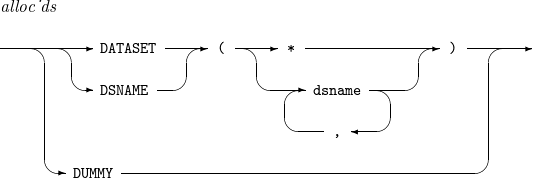

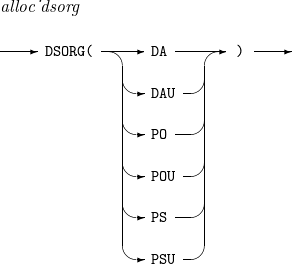
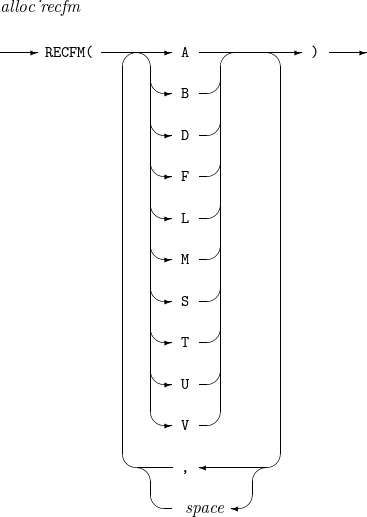
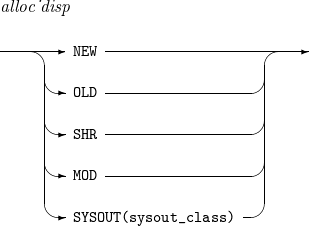
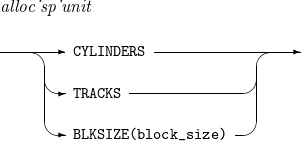
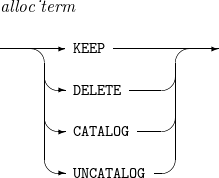

| Item | Description |
|---|---|
rec_len |
Record length for a data set to be allocated. |
serial |
Serial number of the volume on which a new data set is to reside. |
quantity |
Size of the initial volume space to be allocated for the data set. |
increment |
Size of the increment volume space to be allocated dynamically when more space is needed. |
dir_blocks |
Size of the space to be allocated for the directory of a new partitioned data set (PDS). For syntax check only. |
destination |
Output destination to which SYSOUT data sets are directed. For syntax check only. |
unit |
Device to which a data set is to be allocated. |
attr_list |
List of attributes to assign to a new data set. |
writer |
Name of an external writer. For syntax check only. |
dsname |
Name of a data set to be allocated. To specify a PDS, specify member names enclosed by parentheses. |
ddname |
DD name of a data set to be allocated. |
sysout_class |
Output class to which SYSOUT data sets are directed. For syntax check only. |
block_size |
Block length in bytes. For syntax check only. |
Operands
The following table describes the operands mentioned previously.
| Operand | Description |
|---|---|
BLKSIZE (BLK, BL) |
Specifies the block length in bytes. |
CATALOG (CAT, CA) |
Adds a new data set to a catalog. |
CYLINDERS (CYLINDER, CYL, CY) |
Specifies that the unit of the initial and increment volume space is to be cylinder. |
DATASET (DA) |
Specifies the name of a new data set. |
DDNAME (DDN, DD) |
Specifies the DD name of a new data set. |
DELETE (DEL) |
Specifies the data set is to be deleted after use. |
DEST |
Specifies the output destination for the SYSOUT data set. For syntax check only. |
DIR |
Specifies the size of the volume space to allocate to a PDS. For syntax check only. |
DSNAME (DSN, DS) |
Specifies the name of a new data set. |
DSORG |
Specifies the structure for a new data set.
|
DUMMY |
Specifies that a new data set is to be dummy. |
FILE (FI, F) |
Specifies the DD name. |
HOLD |
Directs the SYSOUT data set to the hold queue. For syntax check only. |
KEEP |
Specifies that the data set is to be kept after use. |
LRECL |
Specifies the record length. |
MOD |
Extends the size of an existing data set when adding records. |
NEW (NE) |
Creates a new data set. |
OLD |
Reads an existing data set. |
RECFM |
Specifies the record format.
|
RELEASE |
Releases unused space when a data set is closed. |
REUSE (REU) |
Specifies that the data set specified in the ddname is to be reused if it is already used. The REUSE operand cannot be used when the disposition status of an already allocated DD is OLD and the disposition status of a newly allocated DD is SHR.. In this case, after executing the FREE command, the ALLOCATE command must be executed again. |
ROUND (RO) |
Allocates the initial and increment volume space in cylinders. For syntax check only. |
SHR (SH) |
Allows an existing data set to be shared with other users concurrently. |
SPACE (SP) |
Specifies the size of the volume space to be allocated for a new data set. |
SYSOUT (SY) |
Specifies the output class to which SYSOUT data sets are directed. For syntax check only. |
TRACKS (TRACK, TRA, TR, T) |
Specifies that the unit of the initial and increment volume space is to be track. |
INPUT |
Inputs process. For syntax check only. |
OUTPUT |
Outputs process. For syntax check only. |
UNCATALOG |
Removes an old data set from the catalog. |
UNIT |
Specifies the device to which a data set is to be allocated. |
USING (US) |
Specifies the list of attributes to be assigned to a data set. |
VOLUME (VOL, VO) |
Specifies the serial number of the volume on which a new data set is to be allocated or where an old data set resides. |
VSEQ (VSE) |
Specifies the sequence number of the volume on which a new data set is to be allocated or an old data set resides. For syntax check only. |
WRITER |
Specifies an external writer. For syntax check only. |
Example
The following example uses the ALLOCATE command.
ALLOC DSN(NEW.DATA),NEW,USING(ATTR1),VOL(VOL1)
6. ALTDATE Command
Alters the current date.Valid only in a TSO session.
Syntax

| Item | Description |
|---|---|
yymmdd |
Year, month, and date to be set in the format yymmdd. If not specified, the date is reset to one of the following.
|
Operands
The following table describes the operands mentioned previously.
| Operand | Description |
|---|---|
STANDARD |
Specifies time in the yymmdd format. |
DOMESTIC |
Specifies time in the Japanese date format. Not supported in OpenFrame. |
Example
The following example uses the ALTDATE to set the current date to March 1, 2016.
ALTDATE STANDARD(160301)
7. ALTJOB Command
Alters the attributes of a job that meets conditions you define.
Syntax

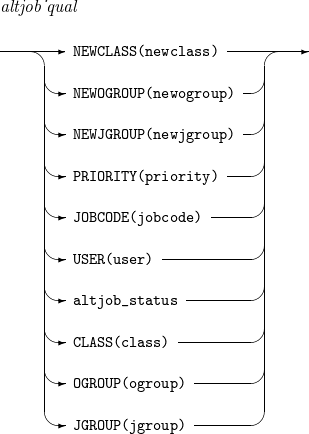
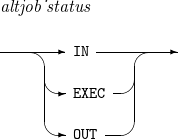
| Item | Description |
|---|---|
jobname |
Name of a job whose attributes are to be altered. To change the attributes of all jobs, specify an asterisk (*). |
newclass |
New output class. |
newogroup |
New output work group. For syntax check only. |
newjgroup |
New job group. For syntax check only. |
priority |
New priority. For syntax check only. |
jobcode |
Job code. For syntax check only. |
user |
User. To change the attributes of all users' jobs, specify an asterisk (*). |
class |
Output class. |
ogroup |
Output job group. For syntax check only. |
jgroup |
Job group. For syntax check only. |
Operands
The following table describes the operands mentioned previously.
| Operand | Description |
|---|---|
NEWCLASS |
Changes the output class to the specified value. This operand only applies to jobs queued for output. |
NEWOGROUP |
Changes the output group to the specified value. For syntax check only. |
NEWJGROUP |
Changes the job group to the specified value. For syntax check only. |
PRIORITY |
Changes the input priority to the specified value. For syntax check only. |
JOBCODE |
Alters attributes of a job associated with the specified job code. For syntax check only. |
USER |
Alters attributes of the job associated with the specified user. |
CLASS |
Alters attributes of the jobs associated with the specified output class. This operand only applies to jobs that are queued for output. |
OGROUP |
Alters attributes of the jobs associated with the specified output group. For syntax check only. |
JGROUP |
Alters attributes of the jobs belonging to the specified job group. For syntax check only. |
IN |
Alters attributes of waiting jobs. |
EXEC |
Alters attributes of running jobs. |
OUT |
Alters the attributes of jobs queued for output. |
Example
The following example uses the ALTJOB command.
ALTJOB * NEWCLASS(B) OUT CLASS(A)
8. ASCFILE Command
Dynamically allocates a data set needed to run a program. The command supports operands with which you can specify the data set’s attributes.
Syntax

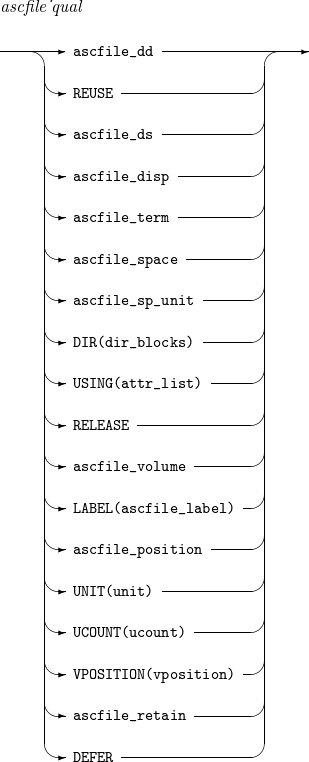


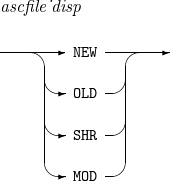
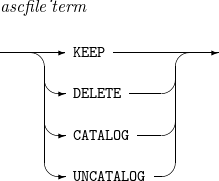

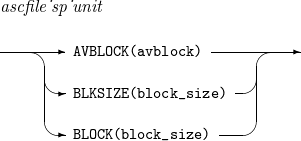

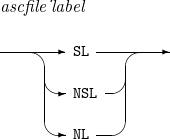
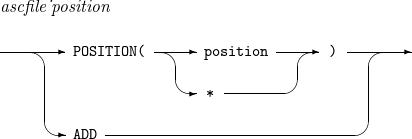

| Item | Description |
|---|---|
dir_blocks |
Size of the directory space to be allocated for a partitioned data set (PDS). For syntax check only. |
attr_list |
List of attributes to assign to a new data set. |
unit |
Device to which a new data set is to be allocated. |
ucount |
Maximum number of devices to which a data set is to be allocated. For syntax check only. |
vposition |
Serial number of the first volume on which a data set is to reside when it spans multiple volumes. For syntax check only. |
ddname |
DD name of a new data set. |
dsname |
Name of a new data set. To specify a PDS, specify member names enclosed by parentheses. |
quantity |
Size of the initial volume space to be allocated for the data set. |
increment |
Size of the increment volume space to be allocated dynamically when more space is needed. |
avblock |
Average block length in bytes. |
block_size |
Block length in bytes. |
serial |
Serial number of the volume on which a new data set is to reside. |
position |
File sequence number of a magnetic tape volume for a new data set. For syntax check only. |
Operands
The following table describes the operands mentioned previously.
| Operand | Description |
|---|---|
REUSE |
Specifies that the data set specified in the ddname is to be reused if it is already used. For syntax check only. |
DIR |
Specifies the size of the space to be allocated for the directory of a new PDS. For syntax check only. |
USING |
Specifies the list of attributes to be assigned to a data set. |
RELEASE |
Specifies that unused space is to be released when a data set is closed. |
LABEL |
Specifies the label type.
|
UNIT |
Specifies the device to which a data set is to be allocated. |
UCOUNT |
Specifies the maximum number of devices to which a data set is to be allocated. For syntax check only. |
VPOSITION |
Specifies the serial number of the first volume on which a data set is to reside when it spans multiple volumes. For syntax check only. |
DEFER |
Mounts a magnetic tape volume when the data set is opened. For syntax check only. |
DDNAME (DDN, DD) |
Specifies the DD name of a new data set. |
DSNAME (DSN, DS) |
Specifies the name of a new data set. |
DUMMY |
Specifies that a new data set is to be dummy. |
NEW |
Creates a new data set. |
OLD |
Reads an existing data set. |
SHR |
Allows an existing data set to be shared with other users concurrently. |
MOD |
Extends the size of an existing data set when adding records. |
KEEP |
Specifies that the data set is to be kept after use. |
DELETE |
Specifies the data set is to be deleted after use. |
CATALOG |
Adds a data set to a catalog. |
UNCATALOG |
Removes the data set from the catalog. |
SPACE (SPA) |
Specifies the size of the volume space to be allocated for a new data set. |
AVBLOCK (AVB) |
Specifies the average block length in bytes. |
BLKSIZE |
Specifies the block length in bytes. |
BLOCK |
Specifies the block length in bytes. |
VOLUME (VOL) |
Specifies the serial number of a volume on which a new data set is to reside. |
POSITION |
Specifies the data set sequence number for a data set stored on a magnetic tape volume. For syntax check only. |
ADD |
Creates a new file on the magnetic tape volume. For syntax check only. |
RETAIN |
Keeps the magnetic tape volume mounted when a data set is freed. For syntax check only. |
UNLOAD |
Unmounts the magnetic type volume when a data set is closed. For syntax check only. |
Example
The following example uses the ASCFILE command.
ASCFILE DSN(NEW.DATA),NEW,USING(ATTR1),VOL(VOL1)
9. ASCLP Command
Allocates a SYSOUT data set and sets print settings.
Syntax

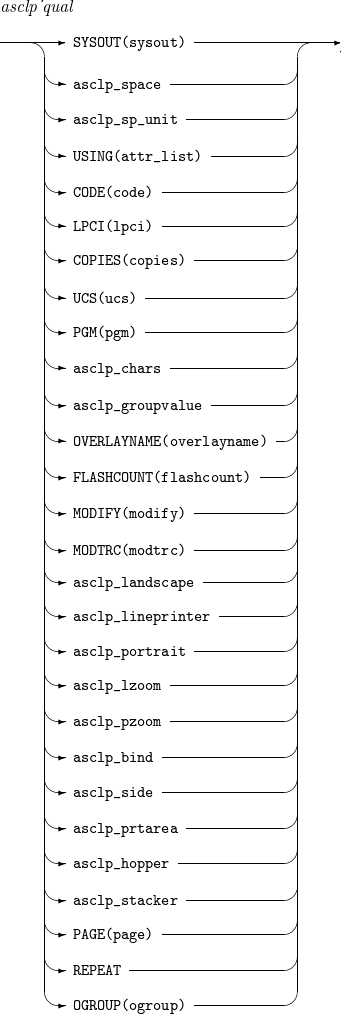


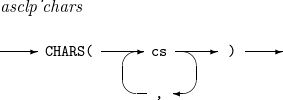

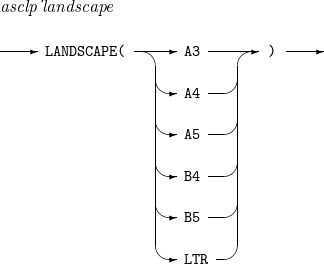

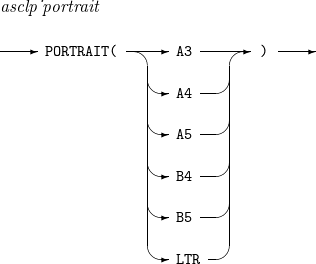
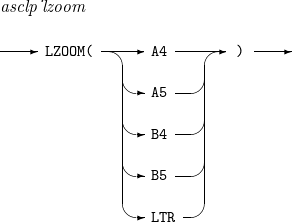

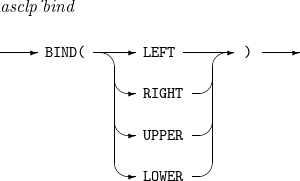


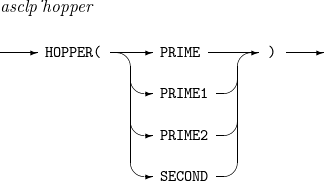
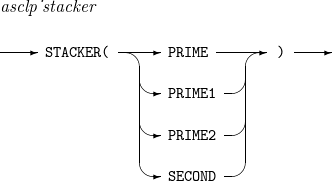
| Item | Description |
|---|---|
ddname |
DD name of a SYSOUT data set. |
sysout |
Output class to which the SYSOUT data set is directed. |
attr_list |
List of attributes to assign to the data set |
code |
Page format code. |
lpci |
Page control image identifier. |
copies |
Number of copies. |
ucs |
Universal character set identifier. |
pgm |
Output program name. |
overlayname |
Form overlay module identifier. |
flashcount |
Number of copies on which to print the forms overlay. |
modify |
Copy modification module identifier. |
modtrc |
Table reference character code to used for printing modified data. |
page |
Number of pages to print as a single print job. After the number has been reached, the remaining pages are queued as another print job. For syntax check only. |
ogroup |
Output group name. For syntax check only. |
quantity |
Size of the initial volume space for the data set. |
increment |
Size of the increment volume space to allocate dynamically when more space is needed. |
avblock |
Average block length in bytes. |
cs |
Character arrangement table module identifier and additional universal character set identifier. |
group |
Number of copies to be made for each page. |
Operands
The following table describes the operands mentioned previously.
| Operand | Description |
|---|---|
SYSOUT |
Specifies the output class to which a SYSOUT data set is directed. |
USING |
Specifies the list of attributes to be assigned to the data set. |
CODE |
Specifies the page format code. |
LPCI |
Specifies the form control image identifier. |
COPIES (COP) |
Specifies the number of copies to print. |
UCS |
Specifies the character set identifier. |
PGM |
Specifies the output program. |
OVERLAYNAME |
Specifies the form overlay module identifier. |
FLASHCOUNT |
Specifies the number of copies on which to print the forms overlay. |
MODIFY |
Specifies the copy modification module identifier. |
MODTRC |
Specifies the table reference character code to used for printing modified data. |
PAGE |
Specifies that after the specified number of pages of a print job is printed, the remaining pages are queued as another print job. For syntax check only. |
REPEAT |
Specifies that items on the print list is printed twice. |
OGROUP |
Specifies the output group. For syntax check only. |
SPACE |
Specifies the size of the volume space to be allocated for the SYSOUT data set. |
AVBLOCK (AVB) |
Specifies the average block length in bytes. |
CHARS |
Specifies the character arrangement table module identifier and additional universal character set identifier. |
GROUPVALUE |
Specifies the number of copies to be made for each page. |
LANDSCAPE |
Prints the SYSOUT data set in landscape.
|
LINEPRINTER |
Prints the SYSOUT data set in line printing mode.
|
PORTRAIT |
Prints the SYSOUT data set in portrait.
|
LZOOM |
Scale the output to 80% and print it in landscape.
|
PZOOM |
Scale the output to 80% and print it in portrait.
|
BIND |
Specifies the binding side.
|
SIDE |
Specifies whether to print on both sides or not.
|
PRTAREA |
Specifies whether to limit print area.
|
HOPPER |
Specifies the input hopper.
|
STACKER |
Specifies the output hopper.
|
Example
The following example uses the ASCLP command.
ASCLP LIST1 USING(ATTRLIST)
10. ATTRIB Command
Defines a list of attributes to be referenced by the USING operand of the ALLOCATE command.
Syntax

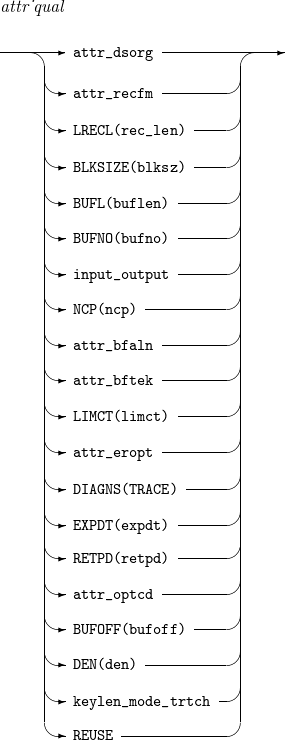
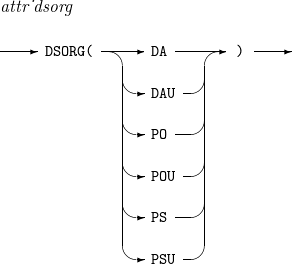
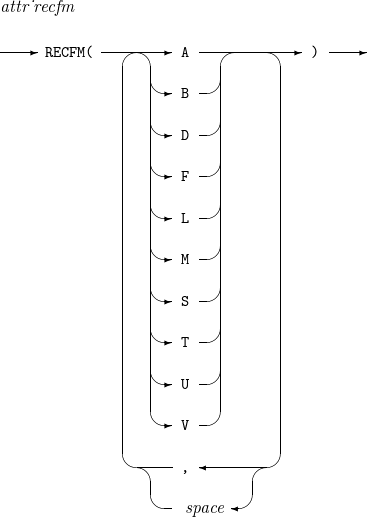


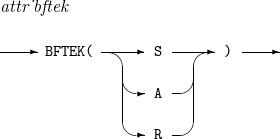
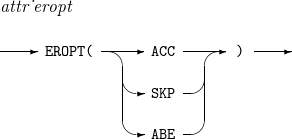
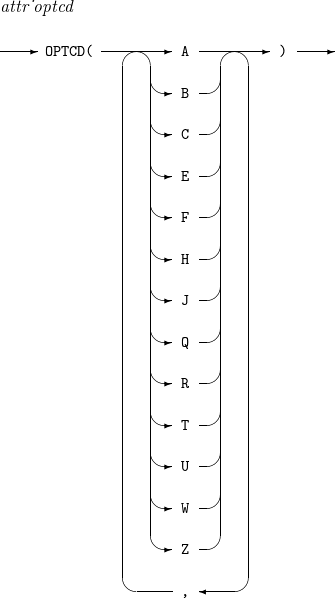
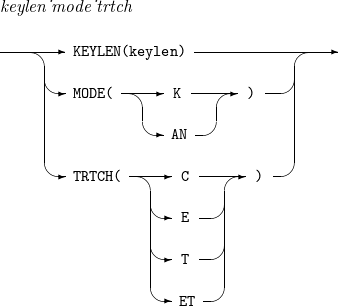
| Item | Description |
|---|---|
name |
Name of a list of attributes. |
rec_len |
Record length. |
blksz |
Block length. |
buflen |
Buffer length. For syntax check only. |
bufno |
Number of buffers for a data set. For syntax check only. |
ncp |
Maximum number of READ or WRITE allowed before a CHECK is issued. For syntax check only. |
limct |
Number of tracks or blocks to be searched. For syntax check only. |
expdt |
Expiration date of a data set. |
retpd |
Retention period in days. |
bufoff |
Prefix length of the block. For syntax check only. |
den |
Magnetic tape storage density. For syntax check only. |
keylen |
Key length. |
Operands
The following table describes the operands mentioned previously.
| Operand | Description |
|---|---|
DSORG (DS) |
Specifies the data set structure.
|
RECFM (REC) |
Specifies the record format.
|
LRECL (LR) |
Specifies the record length. |
BLKSIZE (BLK, BL) |
Specifies the block length. |
BUFL |
Specifies the buffer length. For syntax check only. |
BUFNO (BUFN) |
Specifies the number of buffers for a data set. For syntax check only. |
INPUT (I) |
Process the data set to be processed for input. For syntax check only. |
OUTPUT (OU) |
Process the data set to be processed for output. For syntax check only. |
NCP (N) |
Specifies the maximum number of READ or WRITE allowed before a CHECK is issued. For syntax check only. |
BFALN (BFA) |
Specifies the boundary alignment of buffers. For syntax check only. |
BFTEK (BFT) |
Specifies the type of buffering. For syntax check only. |
LIMCT (LI) |
Specifies the number of tracks or blocks to be searched. For syntax check only. |
EROPT (ER) |
Specifies a handling method to use if an error occurs processing a record. For syntax check only. |
DIAGNS (DI) |
Traces the work area and the DCB. For syntax check only. |
EXPDT (EX) |
Specifies the expiration date of a data set. |
RETPD (RET) |
Specifies the retention period in days. |
OPTCD (OP) |
Specifies options. For syntax check only. |
BUFOFF (BUFO) |
Specifies the prefix length of a block. For syntax check only. |
DEN (DE) |
Specifies the magnetic tape storage density. For syntax check only. |
KEYLEN (K) |
Specifies the key length. |
MODE (M) |
Specifies the print mode for printing Chinese characters. For syntax check only. |
TRTCH (T) |
Specifies the recording tape for the tape. For syntax check only. |
REUSE (REU) |
Specifies that the data set specified in the ddname is to be reused if it is already used. |
Example
The following example uses the ATTRIB command.
ATTRIB DCB1 RECFM(F,B),LRECL(80),DSORG(PO)
11. CALL Command
Executes an application program or a dynamic library. The exit codes of an application are used as return codes for the CALL command.
Syntax

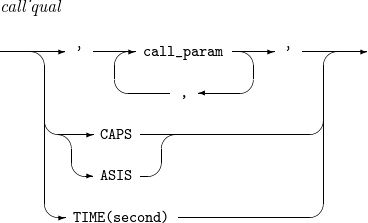
| Item | Description |
|---|---|
dsname |
Name of a data set. To specify a PDS, specify member names enclosed by parentheses. |
call_param |
Parameter values to pass to a program. |
second |
Execution timeout in seconds. For syntax check only. |
Operands
The following table describes the operands mentioned previously.
| Operand | Description |
|---|---|
TIME (T) |
Specifies the execution timeout for the CPU in seconds. For syntax check only. |
CAPS |
Converts parameter values to uppercase letters. |
ASIS |
Does not convert parameter values to uppercase letters. |
Example
The following example uses the CALL command.
CALL 'SYS1.LINKLIB(JLAASSY)' '12,ALL',ASIS
12. CANCEL Command
Cancels a submitted task processed by the SUBMIT command.
Syntax

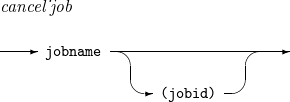

| Item | Description |
|---|---|
jobname |
Name of a job to cancel. |
jobid |
ID of the job to cancel. |
Operands
The following table describes the operands mentioned previously.
| Operand | Description |
|---|---|
NOPURGE (N) |
Does not delete the output data set of a cancelled job. |
PURGE (P) |
Deletes the output data set of a cancelled job. |
Example
The following example uses the CANCEL command.
CANCEL (D58BOBTA,D58BOBTB(JOB00051),D58BOBTC)
13. CLSTWS Command
Disconnects a specified workstation from the AIM.
Syntax

| Item | Description |
|---|---|
ws |
Name of a workstation to disconnect from AIM. |
Operands
The following table describes the operands mentioned previously.
| Operand | Description |
|---|---|
WS |
Specifies the name of a workstation to disconnect from AIM. |
MODE |
Specifies the disconnect mode.
|
Example
The following example uses the CLSTWS command.
CLSTWS WS(OIVPWS01) CLSTWS WS(OIVPWS01) MODE(EMG)
14. COPY Command
Copies a member of a sequential data set or a partitioned data set to another sequential data set or partitioned data set.
Syntax

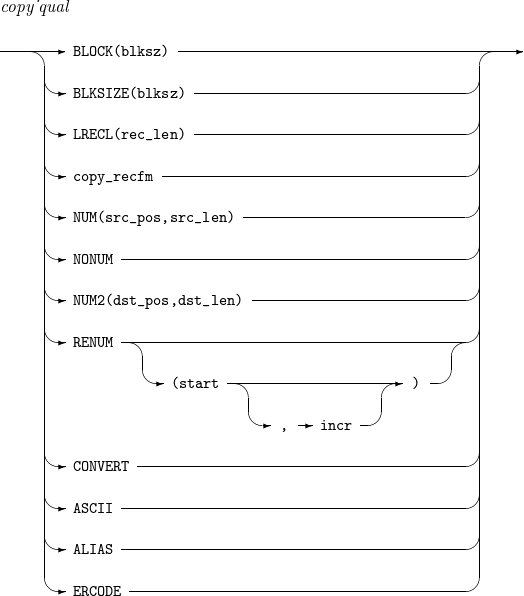
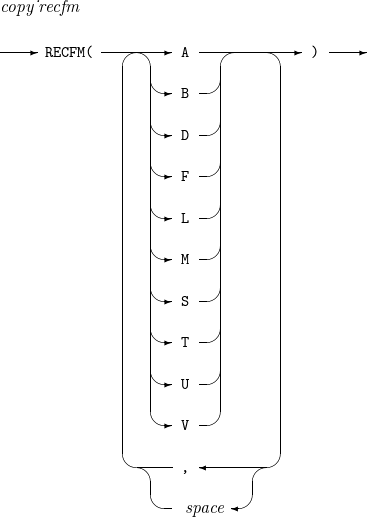
| Item | Description |
|---|---|
src_dsname |
Name of an input data set. |
dst_dsname |
Name of an output data set. |
blksz |
Block length for the output data set. For syntax check only. |
rec_len |
Record length for the output data set. For syntax check only. |
src_pos |
Starting position of the row number field of an input data set. For syntax check only. |
src_len |
Length of the row number field of the input data set. For syntax check only. |
dst_pos |
Starting position of the row number field of an output data set. For syntax check only. |
dst_len |
Length of the row number field of the output data set. For syntax check only. |
start |
Starting value of the row number. For syntax check only. |
incr |
Increment value for the row number. For syntax check only. |
Operands
The following table describes the operands mentioned previously.
| Operand | Description |
|---|---|
BLOCK (B) |
Specifies the block length for an output data set. For syntax check only. |
BLKSIZE |
Specifies the block length for the output data set. For syntax check only. |
LRECL (L) |
Specifies the record length for the output data set. For syntax check only. |
RECFM (REC) |
Specifies the record format for the output data set. For syntax check only. |
NUM |
Specifies the row number field for an input data set. For syntax check only. |
NONUM (NO) |
Specifies that the row number for the input data set is not to be displayed. For syntax check only. |
NUM2 |
Specifies the row number field for the output data set. For syntax check only. |
RENUM (REN) |
Specifies the starting value and the increment value for the row number. For syntax check only. |
CONVERT (C) |
Specifies that each record is to be printed on the tape without a label. For syntax check only. |
ASCII (AS) |
Specifies that each record is to be printed on the tape without a label. For syntax check only. |
ALIAS (AL) |
Specifies that the alias of a PDS member is to be copied. For syntax check only. |
ERCODE (E) |
Returns an error code if the block length of the input data set is larger than that of the output data set. For syntax check only. |
Example
The following example uses the COPY command.
COPY TEST1(MEM1) TEST2(MEM2)
15. CPYFILE Command
Makes a copy of a data set or a data set member.
Syntax

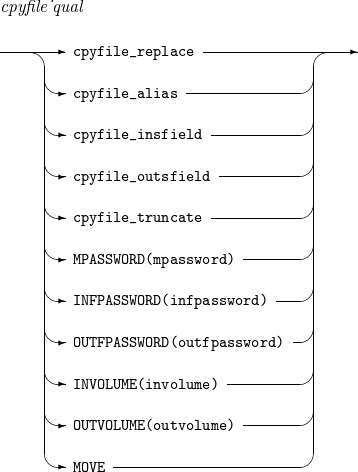





| Item | Description |
|---|---|
src_dsname |
Name of an input data set. To specify a PDS, specify member names enclosed by parentheses. |
dst_dsname |
Name of an output data set. To specify a PDS, specify member names enclosed by parentheses. |
mpassword |
Password required to access a Gem file member. For syntax check only. |
infpassword |
Password required to access an input data set. For syntax check only. |
outfpassword |
Password required to access an output data set. For syntax check only. |
involume |
Serial number of the volume on which an input data set resides. |
outvolume |
Serial number of the volume on which an output data set resides. |
i_pos |
Row number position of an input data set. For syntax check only. |
i_len |
Row number length for an input data set. For syntax check only. |
o_pos |
Row number position of an output data set. For syntax check only. |
o_len |
Row number length for an output data set. For syntax check only. |
Operands
The following table describes the operands mentioned previously.
| Operand | Description |
|---|---|
MPASSWORD (MP) |
Specifies the password required to access a Gem file member. For syntax check only. |
INFPASSWORD (INF) |
Specifies the password required to access an input data set. For syntax check only. |
OUTFPASSWORD (OUTF) |
Specifies the password required to access an output data set. For syntax check only. |
INVOLUME (INV) |
Specifies the serial number of the volume on which an input data set resides. This operand is valid only when the input data set is not cataloged. |
OUTVOLUME (OUTV) |
Specifies the serial number of the volume on which an output data set resides. This operand is valid only when the output data set is not cataloged. |
MOVE (MO) |
Moves a data set or a PDS member. For syntax check only. |
NOREPLACE (NOR) |
Generates an error if a specified output data set or a specified PDS member already exists. |
REPLACE (REP, R) |
Replaces an existing output data set or PDS member. |
NOALIAS (NOA) |
Specifies that the alias of a member is not to be copied if the member name is specified. For syntax check only. |
ALIAS (A) |
Specifies that the alias of a member is to be copied even if the member name is specified. For syntax check only. |
NOINSFIELD (NOI) |
Specifies that the row number of the input data set does not exist. For syntax check only. |
INSFIELD (I) |
Sets the row number position and length of an input data set. For syntax check only. |
NOOUTSFIELD (NOO) |
Specifies that the row number of the output data set does not exist. For syntax check only. |
OUTSFIELD (O) |
Sets the row number position and length of an output data set. For syntax check only. |
NOTRUNCATE (NOT) |
Generates an error if the record length of an input data set is longer than that of an output data set. For syntax check only. |
TRUNCATE (TR) |
Specifies that exceeding record length is to be truncated to fit the record length of an output data set. For syntax check only. |
Example
The following example uses the CPYFILE command.
CPYFILE 'USER01.SEQ.IFILE' 'USER01.SEQ.OFILE' REPLACE
16. CPYTAP Command
Copies records of a tape volume to another tape volume.
Syntax

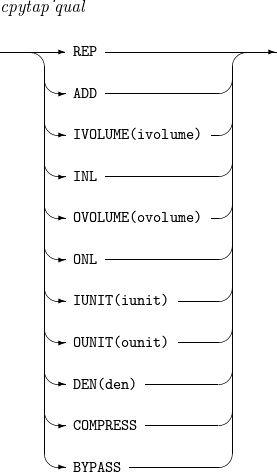
| Item | Description |
|---|---|
ivolume |
Serial number of an input tape volume. |
ovolume |
Serial number of an output tape volume. |
iunit |
Device name or model name of an input tape volume. For syntax check only. |
ounit |
Device name or model name of an output tape volume. For syntax check only. |
den |
Output tape storage density. For syntax check only. |
Operands
The following table describes the operands mentioned previously.
| Operand | Description |
|---|---|
REP |
Replaces files in the output tape volume with files in an input tape volume from the beginning. |
ADD |
Adds files in an input tape volume to to the last file in the output tape volume. |
IVOLUME |
Specifies the serial number of an input tape volume. |
INL |
Specifies that the input tape volume has no label. For syntax check only. |
OVOLUME |
Specifies the serial number of an output tape volume. |
ONL |
Specifies that the output tape volume has no label. For syntax check only. |
IUNIT |
Specifies the device name or model name of the input tape volume. For syntax check only. |
OUNIT |
Specifies the device name or model name of the output tape volume. For syntax check only. |
DEN |
Specifies the output tape storage density. For syntax check only. |
COMPRESS |
Compresses the output tape volume with a compression device. For syntax check only. |
BYPASS |
Skips checking the expiration date of the first file in the output tape volume. For syntax check only. |
Example
The following example uses the CPYTAP command.
CPYTAP REP IVOLUME(VOL1) OVOLUME(VOL2) IUNIT(UNIT1) OUNIT(UNIT2)
17. CRTFILE Command
Creates a data set or adds it to a catalog.
Syntax

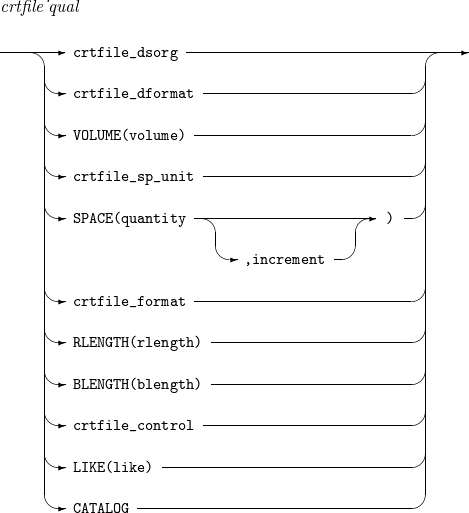
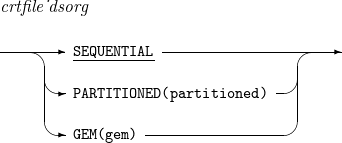

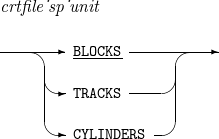
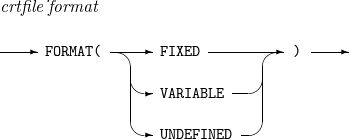
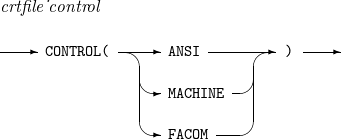
| Item | Description |
|---|---|
volume |
Serial number of the volume on which a new data set is to be allocated or where an old data set resides. |
quantity |
Size of the initial volume space to be allocated to a new data set. |
increment |
Size of the increment volume space to be allocated dynamically when more space is needed. |
rlength |
Record length. |
blength |
Block length. |
like |
Attributes to be assigned to a data set. For syntax check only. |
partitioned |
Directory block number for a partitioned data set. |
gem |
Option to create a Gem file. For syntax check only. |
Operands
The following table describes the operands mentioned previously.
| Operand | Description |
|---|---|
VOLUME (VOL, V) |
Specifies the serial number of the volume on which a new data set is to be allocated or where an old data set resides. |
SPACE (SPA, SP) |
Specifies the size of the volume space to be allocated for a new data set. |
RLENGTH (RL, R) |
Specifies the record length. |
BLENGTH (BLE) |
Specifies the block length. |
LIKE (L) |
Specifies the specified attributes are to be assigned to a new data set. For syntax check only. |
CATALOG (CAT, CA) |
Adds a data set to the catalog. |
SEQUENTIAL (SEQ, SE) |
Creates a sequential data set. |
PARTITIONED (P) |
Creates a partitioned data set. |
GEM (G) |
Creates a Gem file. For syntax check only. |
DFORMAT (D) |
Specifies the directory format for a partitioned data set. For syntax check only. |
BLOCKS (BLO) |
Specifies that the unit of the initial and increment volume space is to be block. |
TRACKS (TR) |
Specifies that the unit of the initial and increment volume space is to be track. |
CYLINDERS (CY) |
Specifies that the unit of the initial and increment volume space is to be cylinder. |
FORMAT (F) |
Specifies the record format.
|
CONTROL (CO) |
Specifies control characters. For syntax check only. |
Example
The following example uses the CRTFILE command.
CRTFILE 'USER001.SEQ.FILE' VOL(VOL01) CA
18. CRTJOBS Command
Schedules a job to start when an event is raised.
Syntax
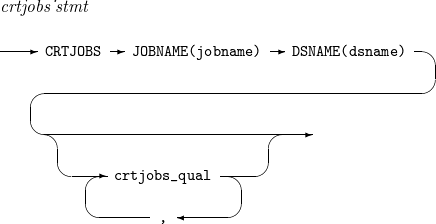
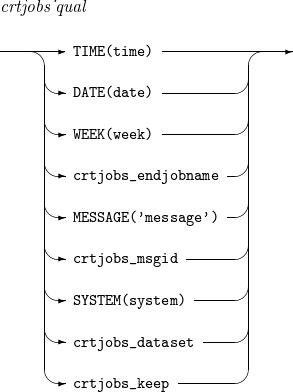




| Item | Description |
|---|---|
jobname |
Name of a job to start. |
dsname |
Name of the PDS that contains a job. |
time |
Time in the format HH.MM. |
date |
Date. For syntax check only. |
week |
Weekday. For syntax check only. |
message |
Output message. For syntax check only. |
system |
System event. For syntax check only. |
endjobname |
Name of a job. For syntax check only. |
msgid |
Identifier of a message. For syntax check only. |
waitdsname |
Name of a data set. For syntax check only. |
Operands
The following table describes the operands mentioned previously.
| Operand | Description |
|---|---|
JOBNAME (JOBN) |
Specifies the name of a job to start. |
DSNAME (DSN) |
Specifies the name of the PDS that contains a job. |
TIME |
Starts the job at the specified time. |
DATE |
Starts the job on the specified date. For syntax check only. |
WEEK |
Starts the job on the specified weekday. For syntax check only. |
MESSAGE |
Starts the job when the specified message is displayed. For syntax check only. |
SYSTEM |
Starts the job when the specified system event occurs. For syntax check only. |
ENDJOBNAME |
Starts the job when the specified job completes. For syntax check only. |
MSGID |
Starts the job when the message with a specified identifier is displayed. For syntax check only. |
DATASET |
Starts the job when the data set with the specified name is created. For syntax check only. |
KEEP |
Keeps the job schedule when an event occurs. For syntax check only. |
ONCE |
Cancels the job schedule when an event occurs. |
Example
The following example uses the CRTJOBS command.
CRTJOBS JOBN(JOB01) DSN('SYS1.JCLLIB') TIME(18.00) ONCE
19. CVTFPD Command
Copies files in a floppy disk to a general disk volume or vice versa. For syntax check only.
Syntax

20. CVTTAP Command
Copies files in a tape volume to a general disk volume and vice versa.
Syntax

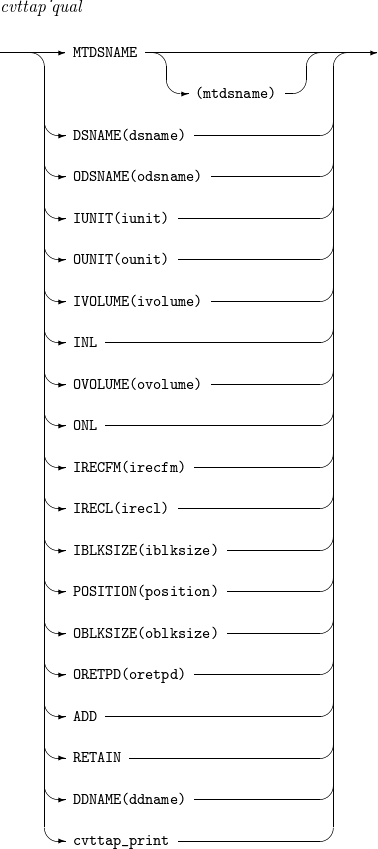
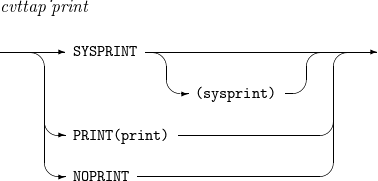
| Item | Description |
|---|---|
mtdsname |
Name of an input file in a tape volume. |
dsname |
Name of an input file in a direct access volume. |
odsname |
Name of an output file. |
iunit |
Device name or model name of an input tape volume. |
ounit |
Device name or model name of an output tape volume. |
ivolume |
Serial number of an input tape volume. |
ovolume |
Serial number of n output tape volume. |
irecfm |
Record format for an input file. For syntax check only. |
irecl |
Record length for an input file. For syntax check only. |
iblksize |
Block length for an input file. For syntax check only. |
position |
Position of the files in an tape volume. For syntax check only. |
oblksize |
Block size for an output file. For syntax check only. |
oretpd |
Retention period for an output file. For syntax check only. |
ddname |
DD name. For syntax check only. |
sysprint |
Output class for a message. For syntax check only. |
File whose message is to be printed. For syntax check only. |
Operands
The following table describes the operands mentioned previously.
| Operand | Description |
|---|---|
MTDSNAME |
Specifies the name of an input file in a tape volume. |
DSNAME |
Specifies the name of an input file in a direct access volume. |
ODSNAME |
Specifies the name of an output file. |
IUNIT |
Specifies the device name or model name of the input tape volume. |
OUNIT |
Specifies the device name or model name of the output tape volume. |
IVOLUME |
Specifies the serial number of the input tape volume. |
INL |
Specifies that the input tape volume has no label. For syntax check only. For syntax check only. |
OVOLUME |
Specifies the serial number of the output tape volume. |
ONL |
Specifies that the output tape volume has no label. For syntax check only. |
IRECFM |
Specifies the record format for the input data set. For syntax check only. |
IRECL |
Specifies the record length for the input data set. For syntax check only. |
IBLKSIZE |
Specifies the block length for the input data set. For syntax check only. |
POSITION |
Specifies the position of each file in the tape volume. For syntax check only. |
OBLKSIZE |
Specifies the block length for the output data set. For syntax check only. |
ORETPD |
Specifies the retention period for output files. For syntax check only. |
ADD |
Specifies that the files in an input tape volume are added to the last file in an output tape volume, if the input file is on a tape volume. If this operand is not specified, the files are added to the beginning records of the output tape volume from the beginning. |
RETAIN |
Specifies that automatic ejection of a tape volume is bypassed after a copy is made. For syntax check only. |
DDNAME |
Specifies the DD name. For syntax check only. |
SYSPRINT |
Specifies the message output class. For syntax check only. |
Specifies the file whose message is to be printed. For syntax check only. |
|
NOPRINT |
Does not print a message. For syntax check only. |
Example
The following example uses the CVTTAP command.
CVTTAP MTDSNAME('A.MT') IUNIT(U1) ODSNAME('A.OUT')
21. DELETE Command
Removes a member of a sequential data set or a partitioned data set from the catalog.
Syntax

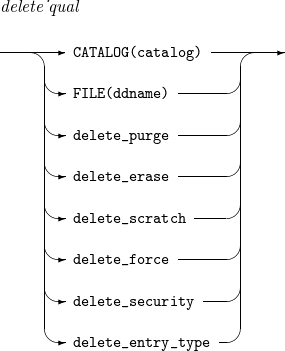





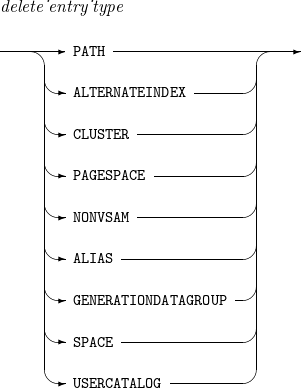
| Item | Description |
|---|---|
dsname |
Data set name. |
catalog |
Catalog that contains a member to be deleted. |
ddname |
DD name of the volume that contains the member to be deleted. For syntax check only. |
Operands
The following table describes the operands mentioned previously.
| Operand | Description |
|---|---|
CATALOG (CAT) |
Specifies a catalog that contains a member to be deleted. |
FILE |
Specifies the DD name of a volume on which the member resides. For syntax check only. |
PURGE (PU) |
Deletes the member even if its retention period has not expired. For syntax check only. |
NOPURGE (NPRG) |
Does not delete the member if its retention period has not expired. For syntax check only. |
ERASE (ERAS) |
Replaces data components of a cluster with 0x00 when the cluster is deleted. For syntax check only. |
NOERASE (NERAS) |
Does not replace data components of a cluster with 0x00 when the cluster is deleted. For syntax check only. |
SCRATCH |
Scratches the member from the volume space when the member is uncataloged. For syntax check only. |
NOSCRATCH (NSCR) |
Does not scratch the member from the volume space when the member is uncataloged. For syntax check only. |
FORCE (FRC) |
Forcibly deletes the member even if there is an item in the VSAM data space. For syntax check only. |
NOFORCE (NFRC) |
Does not delete the member if there is an item in the VSAM data space. For syntax check only. |
WITHSECURITY (WSEC) |
Deletes the TRUST security status if NOSCRATCH is specified. For syntax check only. |
WITHOUTSECURITY (WOSEC) |
Does not delete the TRUST security status if NOSCRATCH is specified. For syntax check only. |
PATH |
Deletes the alternate index path. For syntax check only. |
ALTERNATEINDEX (AIX) |
Deletes the alternate index cluster and its components. For syntax check only. |
CLUSTER (CL) |
Deletes the cluster and its components. |
PAGESPACE (PGSPC) |
Deletes the page space cluster and its components. |
NONVSAM (NVSAM) |
Deletes a data set that is non-VSAM. |
ALIAS |
Deletes the alias. |
GENERATIONDATA GROUP (GDG) |
Deletes the generation data group. |
SPACE (SPC) |
Deletes the VSAM data space. For syntax check only. |
USERCATALOG (UCAT) |
Deletes the user catalog. |
Example
The following example uses the DELETE command.
DELETE (DS1,DS2)
22. DFNFATR Command
Defines attributes for a data set that can be used by the ASCFILE and ASCLP commands, which reference the attributes with the USING operand.
Syntax

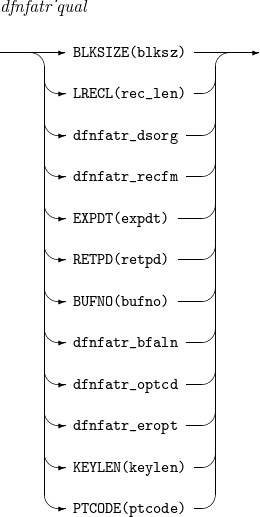

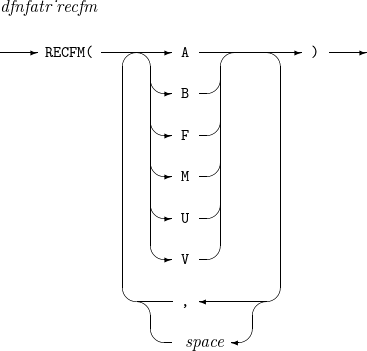

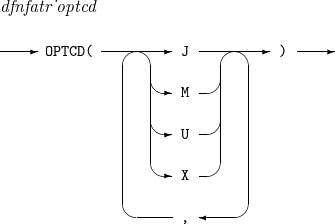
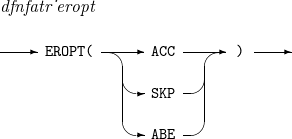
| Item | Description |
|---|---|
name |
Name of an attribute list. |
blksz |
Block size. |
rec_len |
Record length. |
expdt |
Expiration date of the data set. |
retpd |
Retention period in days. |
bufno |
Number of buffers to use. For syntax check only. |
keylen |
Key length. |
ptcode |
Paper tape identifier. For syntax check only. |
Operands
The following table describes the operands mentioned previously.
| Operand | Description |
|---|---|
BLKSIZE |
Specifies the block length. |
LRECL |
Specifies the record length. |
EXPDT |
Specifies the expiration date. |
RETPD |
Specifies the retention period in days. |
BUFNO |
Specifies the number of buffers to use. For syntax check only. |
KEYLEN |
Specifies the key length. |
PTCODE |
Specifies the paper tape identifier. For syntax check only. |
DSORG |
Specifies the data set structure.
|
RECFM |
Specifies the record format.
|
BFALN |
Specifies the boundary alignment of buffers. For syntax check only. |
OPTCD |
Specifies options. For syntax check only. |
EROPT |
Specifies a handling method to use if an error occurs when processing a record. For syntax check only. |
Example
The following example uses the DFNFATR command.
DFNFATR DCB1 RECFM(F),LRECL(80),DSORG(PS)
23. DISPLAY Command
Displays the status of a data set. For syntax check only.
Syntax

24. DLTDS Command
Deletes a data set or a data set member.
Syntax

| Item | Description |
|---|---|
dsname |
Name of a data set. To delete a PDS member, specify the member name enclosed by parentheses. |
Example
The following example uses the DLTDS command.
DLTDS 'A.PDS(MEMBER1)'
25. DLTFILE Command
Deletes a data set or a data set member or removes a data set from the catalog.
Syntax

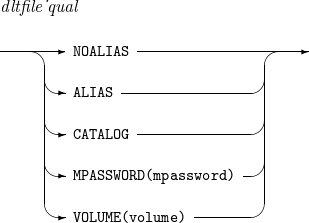
| Item | Description |
|---|---|
dsname |
Name of a data set. To delete a PDS member, specify the member name enclosed by parentheses. |
mpassword |
Password of a Gem file member. For syntax check only. |
volume |
Serial number of the volume on which a data set resides. |
Operands
The following table describes the operands mentioned previously.
| Operand | Description |
|---|---|
NOALIAS (N) |
Specifies that the alias of the specified member is to be kept. For syntax check only. |
ALIAS (A) |
Specifies the alias of the specified member is to be deleted. For syntax check only. |
CATALOG (C) |
Uncatalogs the specified member only. |
MPASSWORD (M) |
Specifies the password of a Gem file member. For syntax check only. |
VOLUME (V) |
Specifies the serial number of a volume on which a data set resides. |
Example
The following example uses the DLTFILE command.
DLTFILE 'USER001.SEQ.FILE'
27. DLTJOB Command
Pauses a running job or cancels a waiting job. The job is deleted from JOBQ.
Syntax

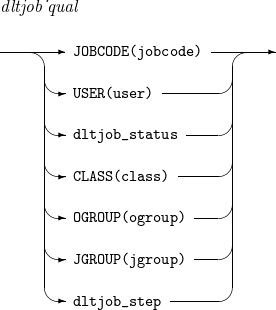
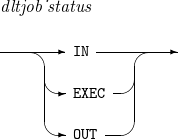
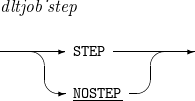
| Item | Description |
|---|---|
jobname |
Name of a job to be deleted from JOBQ. To delete all jobs, specify an asterisk (*). |
jobcode |
Job code. For syntax check only. |
user |
User. To delete a job regardless of the user, specify an asterisk (*). |
class |
Output class. |
ogroup |
Output job group. For syntax check only. |
jgroup |
Job group. For syntax check only. |
Operands
The following table describes the operands mentioned previously.
| Operand | Description |
|---|---|
JOBCODE |
Deletes jobs with the specified job code from JOBQ. For syntax check only. |
USER |
Deletes jobs owned by the specified user from JOBQ. If an asterisk is specified, this operand deletes all jobs regardless of the user. |
CLASS |
Deletes jobs directed to the specified output class from JOBQ. |
OGROUP |
Deletes jobs belonging to the specified output job group from JOBQ. For syntax check only. |
JGROUP |
Deletes jobs belonging to the specified job group from JOBQ. For syntax check only. |
IN |
Deletes waiting jobs only. |
EXEC |
Deletes running jobs only. |
OUT |
Deletes jobs queued for output only. |
STEP |
Deletes the current job step. For syntax check only. |
NOSTEP |
Deletes all job steps. |
Example
The following example uses the DLTJOB command.
DLTJOB JOBA USER(USER01) EXEC
28. DROP Command
Drops monitoring an event that is specified by an EVENT command and a WAIT command.
Syntax
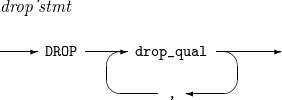
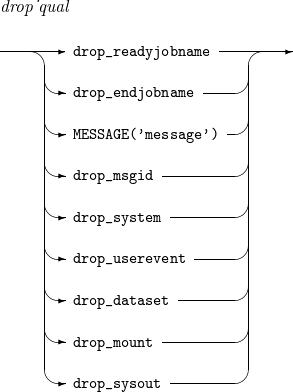








| Item | Description |
|---|---|
message |
Message string to identify a message to be dropped from monitoring if its output is being monitored. This string identifies the message if the string matches the beginning bytes of the message. If this string is in the format '%.string', the string identifies the message if the string matches the middle bytes of the message. |
readyjobname |
Name of a ready job to be dropped from monitoring if its start is being monitored. For syntax check only. |
endjobname |
Name of a job to be dropped from monitoring if its completion is being monitored. |
msgid |
Identifier of a message to be dropped from monitoring if its output is being monitored. |
system |
System event to be dropped from monitoring if its occurrence is being monitored. For syntax check only. |
userevent |
User event to be dropped from monitoring if its occurrence is being monitored. For syntax check only. |
dataset |
Data set to be dropped from monitoring if its creation is being monitored. For syntax check only. |
mount |
Volume to be dropped from monitoring if its mount status is being monitored. For syntax check only. |
sysout |
Completion of printing a job output to be dropped from monitoring if its processing completion is being monitored. For syntax check only. |
Operands
The following table describes the operands mentioned previously.
| Operand | Description |
|---|---|
MESSAGE |
Drops monitoring the output of a specified message if the output is being monitored. |
READYJOBNAME |
Drops monitoring a start of the specified job being if the starting time is monitored. For syntax check only. |
ENDJOBNAME |
Drops monitoring completion of the specified job if competion is being monitored. |
MSGID |
Drops monitoring the output of a message with the specified identifier if the output is being monitored. |
SYSTEM |
Drops monitoring the occurrence of the specified system event if it is being monitored. For syntax check only. |
USEREVENT |
Drops monitoring the occurrence of the specified user event if it is being monitored. For syntax check only. |
DATASET |
Drops monitoring the creation of the specified data set if it is being monitored. For syntax check only. |
MOUNT |
Drops monitoring the mount status of the specified volume if it is being monitored. For syntax check only. |
SYSOUT |
Drops monitoring completion of printing the specified job if it is being monitored. For syntax check only. |
Example
The following example uses the DROP command.
DROP ENDJOBNAME(JOBA JOBB)
29. DSN Command
Starts a new DSN session.
|
For more information about the DSN command, refer to the description about configuring commands in "3.8 IKJEFT01" from OpenFrame Utility Reference Guide. |
30. EVENT Command
Begins to monitor a specific event. Its occurrence is saved as internal record. And if you specify the STACK operand, the history of such occurrences can be stacked. If the WAIT command is issued on the event, the system waits until the event occurs.
Syntax

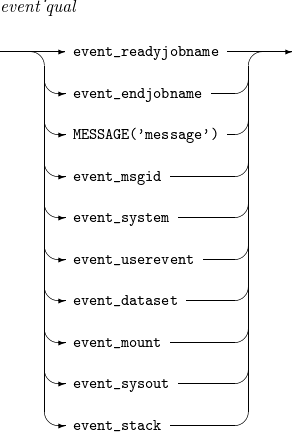









| Item | Description |
|---|---|
message |
Message string to identify a message whose output is to be monitored. The string identifies the message if the string matches the beginning bytes of the message. If this string is in the format '%.string', the string identifies the message if the string matches the middle bytes of the message. |
readyjobname |
Name of a job whose start is to be monitored. For syntax check only. |
endjobname |
Name of a job whose completion is to be monitored. |
msgid |
Identifier of a message whose output is to be monitored. |
system |
System event whose occurrence is to be monitored. For syntax check only. |
userevent |
User event whose occurrence is to be monitored. For syntax check only. |
dataset |
Data set whose creation is to be monitored. For syntax check only. |
mount |
Volume whose mount status is to be monitored. For syntax check only. |
sysout |
Completion of printing of a job is to be monitored. For syntax check only. |
Operands
The following table describes the operands mentioned previously.
| Operand | Description |
|---|---|
MESSAGE |
Monitors the output of the specified message. |
READYJOBNAME |
Monitors the start of a specified job. For syntax check only. |
ENDJOBNAME (END) |
Monitors completion of the specified job. |
MSGID |
Monitors output of a message with the specified identifier. |
SYSTEM |
Monitors occurrence of the specified system event. For syntax check only. |
USEREVENT |
Monitors occurrence of the specified user event. For syntax check only. |
DATASET |
Monitors creation of the specified data set. For syntax check only. |
MOUNT |
Monitors mounting of the specified volume. For syntax check only. |
SYSOUT |
Monitors completion of printing the specified job. For syntax check only. |
STACK |
Specifies how to manage the event occurrence history if an event occurs.
|
Example
The following example uses the EVENT command.
EVENT ENDJOBNAME(JOBA JOBB) STACK(YES)
31. EXCCL Command
Invokes a command procedure.
Syntax

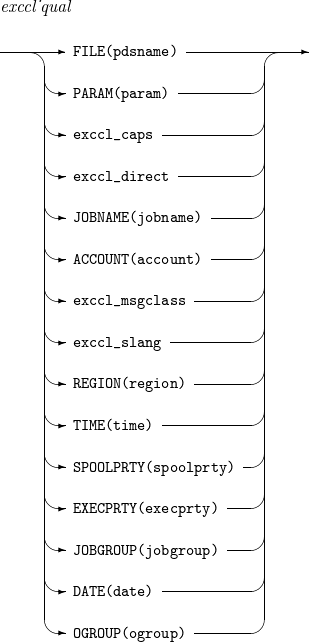




| Item | Description |
|---|---|
member |
Name of a member that stores a command procedure. |
pdsname |
Name of a PDS that stores a command procedure. |
param |
Character string to be passed to symbol parameters defined as the PROC command in a command procedure. |
jobname |
Job name to be referenced when a command procedure is to be executed in the batch environment. For syntax check only. |
account |
Account name to be referenced when a command procedure is to be executed in batch mode. For syntax check only. |
region |
Memory size to be allocated when a command procedure is to be executed in batch mode. For syntax check only. |
time |
Time to end execution when a command procedure is to be executed in batch mode. For syntax check only. |
spoolprty |
Spooling priority of jobs to be set when a command procedure is to be executed in batch mode. For syntax check only. |
execprty |
Execution priority of jobs to be set when a command procedure is to be executed in batch mode. For syntax check only. |
jobgroup |
Work group to be referenced when a command procedure is to be executed in batch mode. For syntax check only. |
date |
Date for an application program’s output list to be printed when a command procedure is to be executed in batch mode. For syntax check only. |
ogroup |
Output job group. For syntax check only. |
msgclass |
Output class to be referenced when a command procedure is to be executed in batch mode. For syntax check only. |
Operands
The following table describes the operands mentioned previously.
| Operand | Description |
|---|---|
FILE (F) |
Specifies the name of the PDS storing the command procedure. |
PARAM (P) |
Specifies the character string to pass as symbol parameter defined as the PROC command in the command procedure. |
JOBNAME |
Specifies the job name when the command procedure is to be executed in batch mode. For syntax check only. |
ACCOUNT |
Specifies the account name when the command procedure is to be executed in batch mode. For syntax check only. |
REGION |
Specifies the memory size when the command procedure is to be executed in batch mode. For syntax check only. |
TIME |
Specifies time to end execution when a command procedure is to be executed in batch mode. For syntax check only. |
SPOOLPRTY |
Specifies the spooling priority of jobs when the command procedure is to be executed in batch mode. For syntax check only. |
EXECPRTY |
Specifies the execution priority of jobs when the command procedure is to be executed in batch mode. For syntax check only. |
JOBGROUP |
Specifies the job group when the command procedure is to be executed in batch mode. For syntax check only. |
DATE |
Specifies the date on which the application program’s output list is to be printed when the command procedure is to be executed in batch mode. For syntax check only. |
OGROUP |
Specifies the output job group. For syntax check only. |
CAPS |
Converts parameter values to uppercase letters. For syntax check only. |
ASIS |
Keeps parameter values as are. For syntax check only. |
DIRECT |
Executes the command procedure directly. For syntax check only. |
INDIRECT (IND) |
Executes the command procedure in batch mode. For syntax check only. |
MSGCLASS |
Specifies the output class when the command procedure is to be executed in batch mode. For syntax check only. |
NOMSGCLASS |
Does not specify the output class when the command procedure is to be executed in batch mode. For syntax check only. |
SLANG |
Specifies a language for output messages when the command procedure is to be executed in batch mode. For syntax check only. |
Example
The following example uses the EXCCL command.
EXCCL EX1 FILE('SYS1.PROCLIB') PARAM('''ABC''')
32. EXCEFI Command
Processes the interactive display screen with the PSAM map. This command takes user input from input fields on the screen and the input is processed by CLIST.
Syntax

The following are the main parameters of the EXCEFI command, which process the user input.
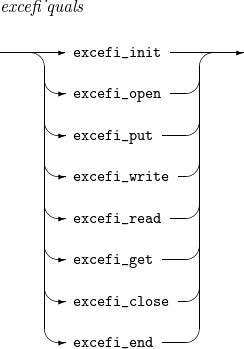
| Item | Description |
|---|---|
INIT |
Initializes the environment and variables used to process the user input. |
OPEN |
Starts to process the user input with the initialized environment and variables. |
PUT |
Passes values declared by CLIST to their respective variables. |
WRITE |
Displays the specified screen and variables in the output fields. |
READ |
Reads the user input entered on the input fields on the screen. |
GET |
Obtains the user input variables and allocates to their respective variables of CLIST. |
CLOSE |
Closes the screen. |
END |
Clears arguments saved in the memory while the display screen is processed. |
The following describes the syntax and operands of each parameter.
-
INIT
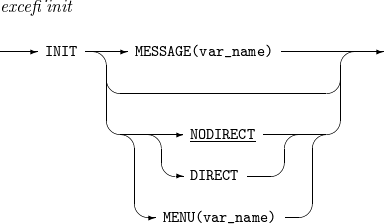
Item Description var_name
Variable name for an item.
The following describes operands.
Operand Description MESSAGE (M)
Stores the message return value. For syntax check only.
DIRECT | NODIRECT
-
DIRECT: displays the screen when a WRITE command is issued.
-
NODIRECT: does not display screen until a READ command is issued.
For syntax check only. (Optional)
MENU
Name of the DD that stores the map to be displayed. (Optional)
-
-
OPEN

Item Description ddname
Name of the DD that stores the map to be displayed.
var_name
Variable name for an item.
The following describes operands.
Operand Description MESSAGE (M)
Stores the message return value. For syntax check only.
-
PUT


Item Description ddname
Name of the DD that stores the map to be displayed.
menu_name
Name of the map to be displayed.
var_name
Variable name for an item.
The following describes operands.
Operand Description MESSAGE (M)
Stores the message return value. For syntax check only.
VAR
Specifies variable names to be used for input and output fields on the screen.
-
WRITE

Item Description ddname
Name of the DD that stores the map to be displayed.
menu_name
Name of the map to be displayed.
var_name
Variable name for an item.
The following describes operands.
Operand Description MESSAGE (M)
Stores the message return value. For syntax check only.
-
READ

Item Description ddname
Name of the DD that stores the map to be displayed.
menu_name
Name of the map to be displayed.
var_name
Variable name for an item.
The following describes operands.
Operand Description AID
Processes input entered with function keys.
MESSAGE (M)
Stores the message return value. For syntax check only.
-
GET


Item Description ddname
Name of the DD that stores the map to be displayed.
menu_name
Name of the map to be displayed.
var_name
Variable name for an item.
The following describes operands.
Operand Description MESSAGE (M)
Stores the message return value. For syntax check only.
VAR
Variables to which to pass the user input.
-
CLOSE

Item Description ddname
Name of the DD that stores the map to close.
var_name
Variable name for an item.
The following describes the operands.
Operand Description MESSAGE (M)
Stores the message return value. For syntax check only.
-
END

Item Description var_name
Variable name for an item.
Operand Description MESSAGE (M)
Stores the message return value. For syntax check only.
Example
The following example uses the EXCEFI command.
EXCEFI INIT MESSAGE(INM) DIRECT MENU(FGIFMT) EXCEFI OPEN FGIFMT MESSAGE(INM) EXCEFI PUT FGIFMT TMENU M(INM) VAR(NINUSI,KENSYU) EXCEFI WRITE FGIFMT TMENU M(INM) EXCEFI READ FGIFMT TMENU AID M(INM) EXCEFI GET FGIFMT TMENU M(INM) VAR(NINUSI,KENSYU) EXCEFI CLOSE FGIFMT MESSAGE(INM) EXCEFI END MESSAGE(INM)
33. EXCEFW Command
Invokes a PSAM map to process the interactdive screen. Input values are returned to the PSAM map to display another map, execute CLIST, or run a COBOL program depending on the value.
Syntax

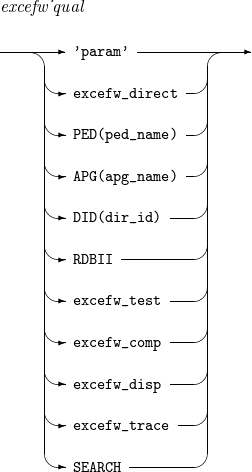





| Item | Description |
|---|---|
dsname |
Name of the PSAM map to display on the screen. |
param |
For syntax check only. |
ped_name |
For syntax check only. |
apg_name |
For syntax check only. |
dir_id |
For syntax check only. |
Operands
The following table describes the operands mentioned previously.
| Operand | Description |
|---|---|
PED |
For syntax check only. |
APG |
For syntax check only. |
DID |
For syntax check only. |
RDBII |
For syntax check only. |
SEARCH |
For syntax check only. |
DIRECT |
For syntax check only. |
NODIRECT |
For syntax check only. |
LOG |
For syntax check only. |
APLTEST |
For syntax check only. |
COMP |
For syntax check only. |
NOCOMP |
For syntax check only. |
DISP |
For syntax check only. |
NODISP |
For syntax check only. |
TRACE |
For syntax check only. |
NOTRACE |
For syntax check only. |
Example
The following example uses the EXCEFW command.
EXCEFW GCMENU
34. EXCPGM Command
Executes an application program or a dynamic library. The exit codes of an application are used as return codes for the EXCPGM command.
Syntax

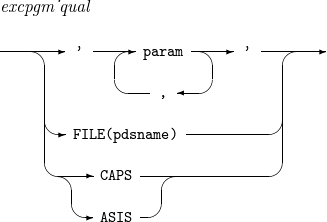
| Item | Description |
|---|---|
member |
Name of a member that stores an external program. |
param |
Parameter values to pass to the external program. |
pdsname |
Name of a PDS that stores an external program. |
Operands
The following table describes the operands mentioned previously.
| Operand | Description |
|---|---|
FILE (F) |
Specifies the name of a PDS that stores an external program. |
CAPS |
Converts parameter values to uppercase letters. |
ASIS |
Does not convert parameter values to uppercase letters. |
Example
The following example uses the EXCPGM command.
EXCPGM JLAASSY '12,ALL' FILE(SYS1.LINKLIB) ASIS
35. EXEC Command
Invokes a command procedure.
Syntax

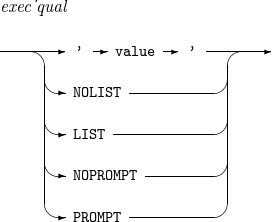
| Item | Description |
|---|---|
dataset |
Name of the command procedure data set. |
value |
Value to be passed to symbol parameters. |
Operands
The following table describes the operands mentioned previously.
| Operand | Description |
|---|---|
NOLIST (NOL) |
Does not list commands. For syntax check only. |
LIST (L) |
Lists commands. For syntax check only. |
NOPROMPT (NOP) |
Does not use terminal prompting. For syntax check only. |
PROMPT (P) |
Use terminal prompting. For syntax check only. |
Example
The following example uses the EXEC command.
EXEC 'TSO1.EX1.CLIST' 'ABC'
36. FEXPORT Command
Executes the following.
-
Executes fexport, which can be either an application program or a shell script, with parameters as follows:
fexport [currently connected device name] [temporary file name] [parameter file name] [file sequence]
A temporary file is created by fexport and the temporary file name is as follows:
FEXPORT_[currently connected device name]_[data set name]_[current time]
-
Records the temporary file content in the data set.
Syntax

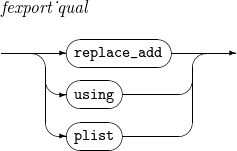



| Item | Description |
|---|---|
dsname |
Data set name. |
using_filename |
Third parameter of fexport. To get the directory path, refer to the VALUE of the PLF_DIRECTORY key in the COMMON section, from the tso subject under OpenFrame Configuration. |
section |
Fourth parameter of fexport. |
Operands
The following table describes the operands mentioned previously.
| Operand | Description |
|---|---|
REPLACE (R) |
Replaces the content of the existing data set with that of the temporary file. |
ADD (A) |
Adds the content of the temporary file to the existing data set. |
USING (U) |
Specifies the parameter file name and sequence. If not specified, it references the DEFAULT_FEXPORT_PLF in the COMMON section, from the tso subject under OpenFrame Configuration. |
OPERATE (O) |
Operates on the parameter file. For syntax check only. |
NOOPERATE (N) |
Does not operate on the parameter file. For syntax check only. |
Example
The following example uses the FEXPORT command.
FEXPORT MY.DATA ADD USING(PARMLIST 1)
37. FETCH Command
Runs applications, system utilities, and dynamic libraries. The exit code of the program is set to the return code of the FETCH command. The FETCH command works only when performing CLIST through the ISPF service of MVS and does not work in TSO batch mode.
Syntax

| Item | Description |
|---|---|
member |
Name of the application, utility, or dynamic library to run. |
Example
The following example uses the FETCH command.
ALLOC FI(SORTIN) DA('TEST.FETCH.SDS01') SHR
ALLOC FI(SORTOUT) DA('TEST.FETCH.SDS02') NEW CATALOG
ALLOC FI(SYSIN) DA('SYS1.PARMLIB(SORTCOMP)') SHR
ALLOC FI(SYSPRINT) DA('TEST.FETCH.OUTPUT01') SHR
FETCH SORT
FREE FI(SORTOUT SORTIN SYSPRINT SYSIN)
38. FIMPORT Command
Executes the following.
-
Records the content of a data set to a temporary file, which is named as follows:
FIMPORT_[currently conntected device name]_[data set name]_[current time]
-
Executes fimport, which can be either an application program or a shell script, with parameters as follows:
fimport [currently conntected device name] [temporary file name] [parameter file name] [parameter sequence]
Syntax
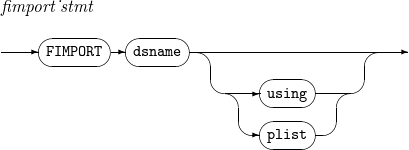


| Item | Description |
|---|---|
dsname |
Name of a data set. |
using_filename |
Third parameter of fexport. To get the directory path, refer to the VALUE of the PLF_DIRECTORY key in the COMMON section, from the tso subject under OpenFrame Configuration. |
section |
Fourth parameter of fimport. |
Operands
The following table describes the operands mentioned previously.
| Operand | Description |
|---|---|
USING (U) |
Specifies the parameter file name and sequence. If not specified, it references the VALUE of the DEFAULT_FIMPORT_PLF key in the COMMON section, from the tso subject under OpenFrame Configuration. |
OPERATE (O) |
Operates on the parameter file. For syntax check only. |
NOOPERATE (N) |
Does not operate on the parameter file. For syntax check only. |
Example
The following example uses the FIMPORT command.
FIMPORT MY.DATA USING(PARMLIST 1)
39. FREE Command
Frees a data set allocated by the ALLOCATE command or the ATTRIB command.
Syntax

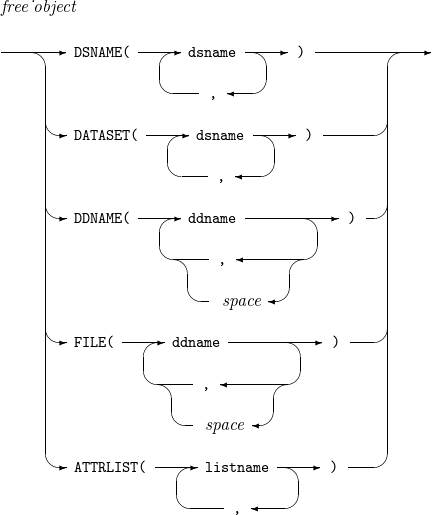
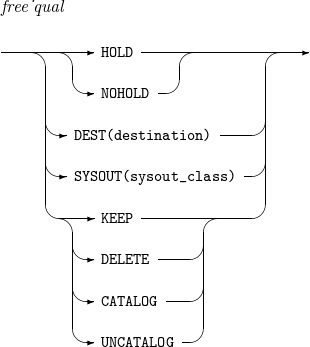
| Item | Description |
|---|---|
dsname |
Name of a data set. |
ddname |
DD name of a data set. |
listname |
Name of an attribute list defined in the ATTRIB command. |
destination |
Output destination for the SYSOUT data set. For syntax check only. |
sysout_class |
Output class of the SYSOUT data set. For syntax check only. |
Operands
The following table describes the operands mentioned previously.
| Operand | Description |
|---|---|
DSNAME (DS) |
Releases a data set with the specified name. |
DATASET (DA) |
Releases a data set with the specified data set name. |
DDNAME (DDN, DD) |
Releases a data set with the specified DD name. |
FILE (FI, F) |
Releases a data set with the specified data set name. |
ATTRLIST (ATTR, AT, A) |
Deletes the attribute list defined in the ATTRIB command. |
ALL (AL) |
Releases all allocated data sets. |
HOLD (H) |
Directs the SYSOUT data set to the hold queue. For syntax check only. |
NOHOLD (N) |
Does not hold printing the SYSOUT data set. For syntax check only. |
DEST (DES) |
Specifies the output destination for the SYSOUT data set. For syntax check only. |
SYSOUT (S) |
Specifies the output class for the SYSOUT data set. For syntax check only. |
KEEP (K) |
Keeps the data set. |
DELETE (DEL) |
Deletes the data set. |
CATALOG (C) |
Catalogs the data set. If a data set is allocated by referring to the catalog, re-catalog it. |
UNCATALOG (U) |
Preserves the data set but deletes catalog information from the catalog. |
Example
The following example uses the FREE command.
FREE DA(FILE1.ASM)
40. FREFILE Command
Frees a data set allocated by the ASCFILE command or the DFNFATR command.
Syntax

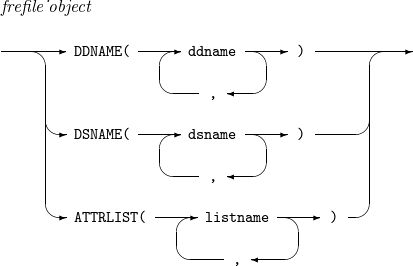
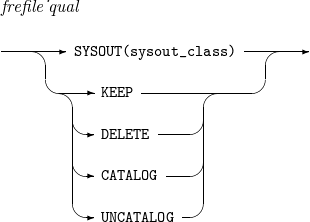
| Item | Description |
|---|---|
ddname |
DD name of a data set. |
dsname |
Name of a data set. |
listname |
Name of an attribute list defined in the DFNFATR command. |
sysout_class |
Output class for SYSOUT data sets. For syntax check only. |
Operands
The following table describes the operands mentioned previously.
| Operand | Description |
|---|---|
ALL |
Releases all allocated data sets. |
DDNAME (DDN) |
Releases a data set with the specified DD name. |
DSNAME |
Releases a data set with the specified name. |
ATTRLIST |
Releases the attribute list defined by the DFNFATR command. |
SYSOUT |
Specifies the output class for the SYSOUT data set. For syntax check only. |
KEEP |
Keeps the data set. |
DELETE |
Deletes the data set. |
CATALOG |
Catalogs the data set. If a data set is allocated by referring to the catalog, re-catalog it. |
UNCATALOG |
Preserves the data set but deletes catalog information from the catalog. |
Example
The following example uses the FREFILE command.
FREFILE DDNAME(INDD)
41. INANET Command
Deactivates a specified workstation.
Syntax

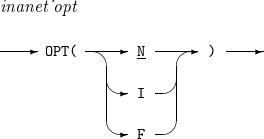
| Item | Description |
|---|---|
id |
Name of a workstation to be deactivated. |
Operands
The following table describes the operands mentioned previously.
| Operand | Description |
|---|---|
ID |
Specifies the workstation to be deactivated.. |
OPT |
Specifies the deactivation method. Only F is supported. Other options are for syntax check only. |
Example
The following example uses the INANET command.
INANET ID(OIVPWS01) INANET ID(OIVPWS01) OPT(F)
43. INTTAP Command
Initializes a tape volume.
Syntax


| Item | Description |
|---|---|
volume |
Serial number of a volume to be initialized. |
unit |
Name of a tape device. For syntax check only. |
den |
Storage density of the volume to be initialized. For syntax check only. |
owner |
Name of the owner to be specified in the volume label. For syntax check only. |
Operands
The following table describes the operands mentioned previously.
| Operand | Description |
|---|---|
VOLUME |
Specifies the serial number of a volume to initialize. |
NL |
Specifies that the volume has no label. For syntax check only. |
UNIT |
Sets the device name of the volume. For syntax check only. |
DEN |
Specifies the storage density of the volume. For syntax check only. |
COMPRESS |
Compresses the volume with a compression device. For syntax check only. |
AUTOMNT |
Keeps the volume mounted after initialization. For syntax check only. |
OWNER |
Specifies the owner in the volume label. For syntax check only. |
ERASE |
Deletes the entire volume before initialization. For syntax check only. |
Example
The following example uses the INTTAP command.
INTTAP VOLUME(VOL1)
44. LIBRARY Command
Adds or removes a PDS to a work library.
Syntax

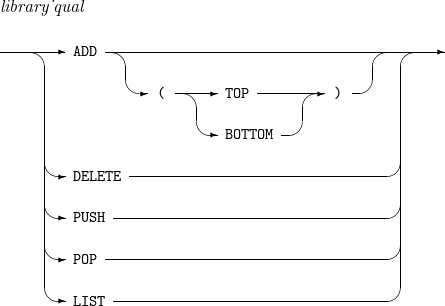
| Item | Description |
|---|---|
pdsname |
PDS name. |
Operands
The following table describes the operands mentioned previously.
| Operand | Description |
|---|---|
ADD (A) |
Adds a data set to a work library. If ADD and DELETE are not specified, existing data sets are removed from the work library and the new data set is added. |
TOP (T) |
Adds the data set to the top of the work library. If TOP and BOTTOM are not specified, the data set is added to the top of the library. |
BOTTOM (B) |
Adds the data set to the bottom of the work library. |
DELETE (D) |
Removes a data set from the work library. |
LIST |
Lists data sets currently valid in the work library. |
PUSH (PU) |
Adds a data set to the top of the work library. |
POP (PO) |
Removes the data set from the work library. |
Example
The following is an example of using the LIBRARY command.
LIBRARY (LIB1.LOAD,LIB2.LOAD)
45. LISTCAT Command
Displays the name and information of catalog entries.
Syntax


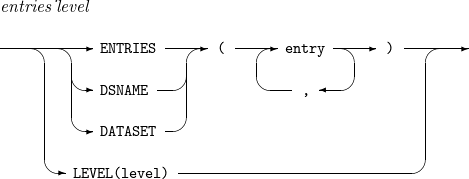
| Item | Description |
|---|---|
catalog |
Catalog whose entries are to be displayed. |
outfile |
Output data set. |
creation |
Creation date. For syntax check only. |
expiration |
Expiration date. For syntax check only. |
file |
DD name of a volume. For syntax check only. |
entry |
Name of an entry to be displayed. |
level |
Level of the entry to be displayed. For syntax check only. |
Operands
The following table describes the operands mentioned previously.
| Operand | Description |
|---|---|
CATALOG (CAT) |
Specifies the catalog whose entries are to be displayed |
OUTFILE (OFILE) |
Specifies the output data set. |
ENTRIES (ENT) |
Specifies the names of the entries to be displayed. |
DSNAME (DS) |
Specifies the names of the entries to be displayed. |
DATASET |
Specifies the names of the entries to be displayed. |
LEVEL (LVL) |
Specifies the level of the entry names. For syntax check only. |
CREATION (CREAT) |
Displays entries created before the specified creation date. For syntax check only. |
EXPIRATION (EXPIR) |
Displays entries that expire after the expiration date. For syntax check only. |
NOTUSABLE (NUS) |
Displays unavailable entries. For syntax check only. |
CLUSTER (CL) |
Displays clusters. |
DATA |
Displays data components. |
INDEX (IX) |
Displays index components. |
ALIAS |
Displays aliases. For syntax check only. |
SPACE (SPC) |
Displays the volume entry including the data space defined in the catalog. For syntax check only. |
NONVSAM (NVSAM) |
Displays non-VSAM data sets. |
USERCATALOG (UCAT) |
Displays user catalogs. For syntax check only. |
GENERATIONDATA GROUP (GDG) |
Displays generation data groups. For syntax check only. |
PAGESPACE (PGSPC) |
Displays page space. For syntax check only. |
ALTERNATEINDEX (AIX) |
Displays alternate index clusters. For syntax check only. |
PATH |
Displays paths. For syntax check only. |
ALL |
Displays all entries. |
NAME |
Displays entry names. |
HISTORY (HIST) |
Displays entry name, owner identifier, creation date, and expiration date. For syntax check only. |
VOLUME (VOL) |
Displays entry name, entry type, associated device type, and volume serial number. For syntax check only. |
ALLOCATION (ALLOC) |
Displays information about the volume allocation. For syntax check only. |
FILE |
Specifies the volume DD name. For syntax check only. |
SUMMARY (SUM) |
Displays the data set name, type, and associated dates. |
Example
The following example uses the LISTCAT command.
LISTCAT CATALOG('SYS1.MASTER.ICFCAT'),ENTRIES('SYS1.JCLLIB')
46. LOGOFF Command
Ends a TSO session.
Syntax

Operands
The following table describes the operands mentioned previously.
| Operand | Description |
|---|---|
DISCONNECT (D) |
Disconnects a TSO session. For syntax check only. |
HOLD (H) |
Keeps the TSO session. For syntax check only. |
Example
The following example uses the LOGOFF command.
LOGOFF
47. LPALLOC Command
Allocates a SYSOUT data set and configures printer settings.
Syntax




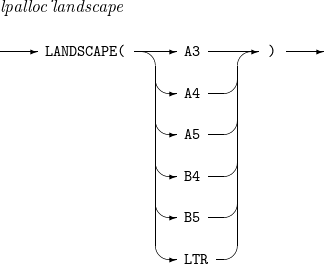
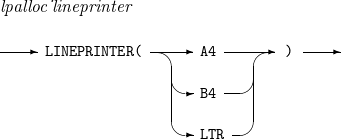
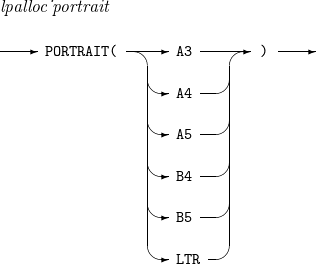
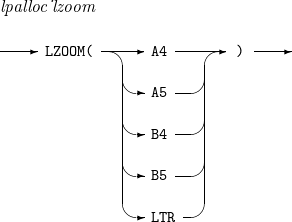
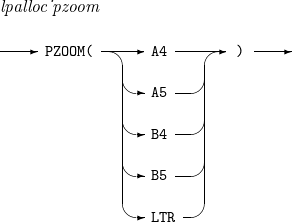
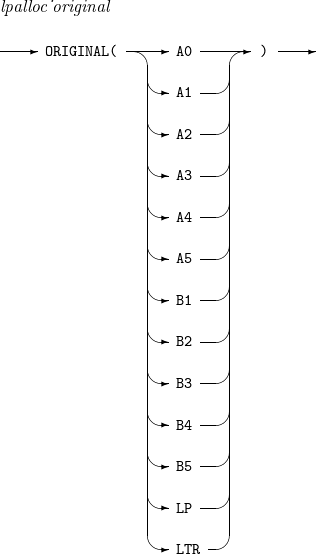

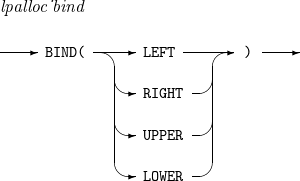


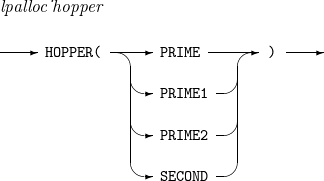
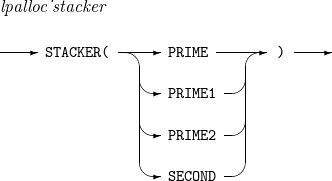

| Item | Description |
|---|---|
ddname |
DD name of a SYSOUT data set. |
sysout |
Output class for the SYSOUT data set. |
attr_list |
List of attributes to use. |
code |
Page format code. |
fcb |
Page control image identifier. |
copies |
Number of copies. |
ucs |
Universal character set identifier. |
pgm |
Output program name. |
overlayname |
Form overlay module identifier. |
flashcount |
Number of copies on which to print the forms overlay. |
outlim |
Maximum number of logical records to print. For syntax check only. |
dest |
Printing destination of the SYSOUT data set. For syntax check only. |
modify |
Copy modification module identifier. |
modtrc |
Table reference character code to used for printing modified data. |
cs |
Character arrangement table module identifier and additional universal character set identifier. |
group |
Number of copies to be made for each page. |
Operands
The following table describes the operands mentioned previously.
| Operand | Description |
|---|---|
REUSE (REU, R) |
Specifies that a specified data set is to be reused if it is already used. For syntax check only. |
SYSOUT (SY) |
Specifies an output class for the SYSOUT data set. |
USING (US) |
Specifies the list of the attributes to use. |
CODE (COD) |
Specifies the page format code. |
FCB (FC) |
Specifies the form control image identifier. |
COPIES (COP) |
Specifies the number of copies to print. |
UCS (UC) |
Specifies the character set identifier. |
PGM (P) |
Specifies the output program. |
OVERLAYNAME (OV) |
Specifies the form overlay module identifier. |
FLASHCOUNT (FL) |
Specifies the number of copies on which to print the forms overlay. |
OUTLIM (OU) |
Specifies the maximum number of logical records to print. For syntax check only. |
DEST (D) |
Specifies the printing destination of the SYSOUT data set. For syntax check only. |
HOLD (H) |
Directs a removed data set to the hold queue. For syntax check only. |
NOHOLD (NOH) |
Does not direct a removed data set to the hold queue. For syntax check only. |
BURST (BU) |
Sends print copies to a burster-trimmer-stacker (BTS). |
NOBURST (NOB) |
Sends print copies to a continuous-forms stacker (CFS). |
MODIFY (MODI) |
Specifies the copy modification module identifier. |
MODTRC (MODT) |
Specifies the table reference character code to used for printing modified data. |
CHARS (CH) |
Specifies the character arrangement table module identifier and additional universal character set identifier. |
GROUPVALUE (G) |
Specifies the number of copies to be made for each page. |
LANDSCAPE (LA) |
Prints the SYSOUT data set in landscape.
|
LINEPRINTER (LI) |
Prints the SYSOUT data set in line printing mode.
|
PORTRAIT (PO) |
Prints the SYSOUT data set in portrait.
|
LZOOM (LZ) |
Scale the output to 80% and print it in landscape.
|
PZOOM (PZ) |
Scale the output to 80% and print it in portrait.
|
ORIGINAL (OR) |
Specifies the size of the print forms set for the program.
|
LAYOUT (LAY) |
Specifies the number of pages of forms to be printed on each sheet.
|
BIND (BI) |
Specifies the binding side.
|
SIDE (SI) |
Specifies the sides to be printed on.
|
PRTAREA (PR) |
Specifies whether to limit print area.
|
HOPPER (HOP) |
Specifies the input hopper.
|
STACKER (ST) |
Specifies the output hopper.
|
PRTYPE (PRTY) |
Specifies the output data record type.
|
Example
The following example uses the LPALLOC command.
LPALLOC LIST1 USING(ATTRLIST)
48. LSTFILE Command
Displays the content or attributes of a data set.
Syntax
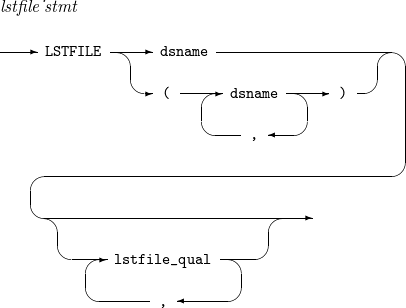
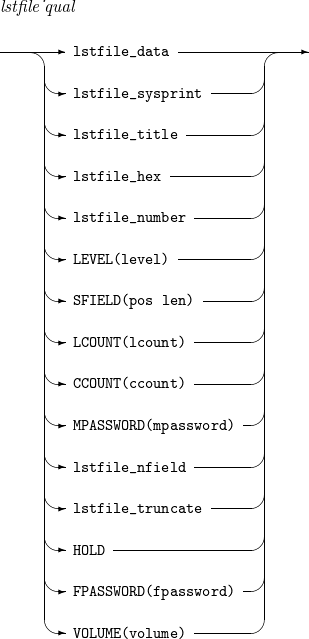

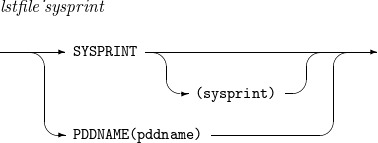
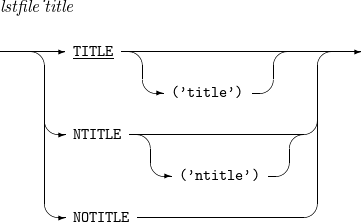

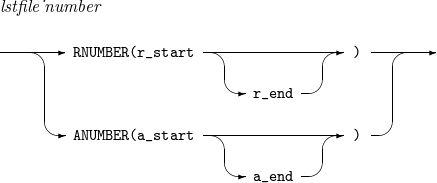
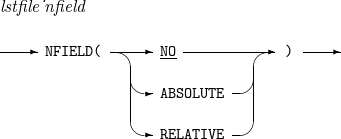

| Item | Description |
|---|---|
dsname |
Name of a data set whose content or attributes are to be displayed. To specify a PDS, specify member names enclosed with parentheses. |
level |
Level of a Gem file member. For syntax check only. |
pos |
Row number position of the data set if absolute row numbers are given. For syntax check only. |
len |
Row number length of the data set if absolute row numbers are given. For syntax check only. |
lcount |
Number of rows to displayed on each sheet. For syntax check only. |
ccount |
Number of decimal positions to displayed in a row. For syntax check only. |
mpassword |
Password for the Gem file member. For syntax check only. |
fpassword |
Password for the data set. For syntax check only. |
volume |
Serial number of a volume that stores the data set. For syntax check only. |
sysprint |
Output class. The data set content or attributes are displayed in the spool with the specified output class. |
pddname |
DD name. The data set content or attributes are displayed in the data set with the specified DD name. |
title |
Title to be displayed at the top of each page of the output list. For syntax check only. |
ntitle |
Title in Japanese to be displayed at the top of each page of the output list. For syntax check only. |
r_start |
Relative row number from which contents are displayed. For syntax check only. |
r_end |
Relative row number up to which contents are displayed. For syntax check only. |
a_start |
Absolute row number from which contents are displayed. For syntax check only. |
a_end |
Absolute row number up to which contents are displayed. For syntax check only. |
Operands
The following table describes the operands mentioned previously.
| Operand | Description |
|---|---|
LEVEL (LE) |
Specifies the level of a Gem file member. For syntax check only. |
SFIELD (SF) |
Specifies the row number position and length of the data set if absolute row numbers are given. For syntax check only. |
LCOUNT (LC) |
Specifies the number of rows to display on each page. For syntax check only. |
CCOUNT (C) |
Specifies the number of decimal positions to display in a row. For syntax check only. |
MPASSWORD (M) |
Specifies the password for the Gem file member. For syntax check only. |
HOLD (HO) |
Holds displaying if the SYSPRINT operand is specified. For syntax check only. |
FPASSWORD (F) |
Specifies the data set password. For syntax check only. |
VOLUME (V) |
Specifies the volume serial number for the data set. For syntax check only. |
DATA (D) |
Displays the content of the data set. |
ATTRIBUTE (AT) |
Displays the attributes of the data set. For syntax check only. |
SYSPRINT (SY) |
Spools the data set content or attributes. |
PDDNAME (P) |
Displays the data set content or attributes in a data set with the specified DD name. For syntax check only. |
TITLE (TI) |
Displays the title at the top of each page of the output list. For syntax check only. |
NTITLE (NT) |
Displays the Japanese title at the top of each page of the output list. For syntax check only. |
NOTITLE (NOTI) |
Does not display the title at the top of each page of the output list. For syntax check only. |
EBCDIC (E) |
Displays the data set content as is. For syntax check only. |
HEXADECIMAL (HE) |
Displays the data set content in a hexadecimal value. For syntax check only. |
RNUMBER (R) |
Displays the data set content or attributes of the specified relative row number. For syntax check only. |
ANUMBER (AN) |
Displays the data set content or attributes of the specified absolute row number. For syntax check only. |
NFIELD (NF) |
Specifies whether to display the row number at the leftmost of the display output. For syntax check only. |
NOTRUNCATE (NOTR) |
Collapses rows after the ccount value. For syntax check only. |
TRUNCATE (TR) |
Does not collapse rows. For syntax check only. |
Example
The following is an example of using the LSTFILE command.
LSTFILE 'USER01.PAR.FILE(MEMBER1)' SY(A)
49. LSTVOL Command
Displays information about a volume and its files. For syntax check only.
Syntax

50. NOP Command
Does nothing. This command is specified with a label where the If command or GOTO command is used to branch.
Syntax

51. OCOPY Command
Copies a member of a data set or Unix file to another data set or a file.
Syntax

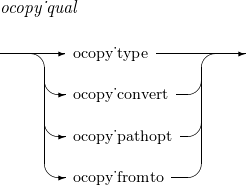




| Item | Description |
|---|---|
src_ddname |
DD name of a input data set or input file. |
dst_ddname |
DD name of a output data set or output file. |
Operands
The following table describes the operands mentioned previously.
| Operand | Description |
|---|---|
INDD |
Specifies the DD name of a input data set or input file. |
OUTDD |
Specifies the DD name of a output data set or output file. |
BINARY | TEXT |
Specifies whether the input data is a binary or a text file. |
CONVERT |
Specifies a character conversion table for converting data. For syntax check only. |
PATHOPTS |
Specifies whether or not to use the specified PATHOPTS value during allocation. For syntax check only. |
TO1047 | FROM 1047 |
Specifies that the TO | FROM section of the character conversion table. For syntax check only. |
Example
The following example uses the OCOPY command.
OCOPY INDD(HFSXML) OUTDD(MVSXML) TEXT
53. PANEL Command
Controls the screen with the PSAM map.
Syntax

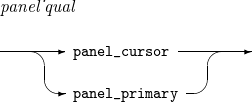


| Item | Description |
|---|---|
panel_id |
Name of a map to display on the screen. |
var_name |
Variable name for an item. |
Operands
The following table describes the operands mentioned previously.
| Operand | Description |
|---|---|
CURSOR |
Specifies the field name for the location of the cursor to be displayed on the screen. |
LOW |
Sets the screen brightness to low. If this operand is not specified, it is set to the default. |
HIGH |
Sets the screen brightness to high. |
NOPRIMARY |
Closes the screen without displaying it when a RETURN key is entered while the display is on. For syntax check only. |
PRIMARY |
Keeps the screen without displaying it even when a RETURN key is entered while the display is on. For syntax check only. |
Example
The following example uses the PANEL command.
PANEL GHBM0010 CURSOR(SN,LOW)
54. PRINTOFF Command
Allocates a data set for SYSOUT, copies the contents of the data set to the SYSOUT data set, and prints it to the printer. At this time, if the data set to be output is not allocated in advance, it allocates directly.
Syntax


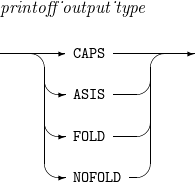
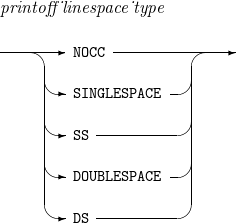

| Item | Description |
|---|---|
dataset_name |
Name of data set to output. |
ddname |
DD name of data set to output. |
unit-type |
Device to allocate data set. Only valid when VOLUME is specified. |
volser |
Serial number of the volume that contains data set. |
class |
Output class of SYSOUT data set. (Default value: A) |
destination |
Output destination of the SYSOUT data set. Only printer name of 1 to 8 characters is allowed. |
nnn(copies) |
Number of copies. (Default value: 1) |
form |
Format to use in printing. For syntax check only. (Default value: $TST) |
fcb |
Format control buffer to use in printing with 1 to 4 characters. |
image |
Image name to use in printing with 1 to 4 character. For syntax check only. |
nnn (linelength) |
Number of character in the line to output with 1 to 208 characters. (Default value: 132) |
nnn (pagelength) |
Number of lines of page to output with 1 to 120 lines. (Default value: 60) |
flash-name |
Name of form flash overlay. |
charset-name |
Name of character set to use in printing. |
progname |
Name of external writer to handle output. For syntax check only. |
font-name |
Font name to use in printing data set. For syntax check only. |
|
One of dataset_name and DDNAME (FILE) must be described, and if both are described, dataset_name must be described first. If only DDNAME (FILE) is described, the corresponding DD should be allocated. If both DDNAME (FILE) and dataset_name are described, check if it is the same as the dsname of the already allocated DD. |
Operands
The following table describes the operands mentioned previously.
| Operand | Description |
|---|---|
UNIT |
Specifies the device to allocate data set. It is valid when VOLUME is specified. |
VOLUME |
Specifies serial number of volume that contains the data set. |
NOMESSAGES (NOMSGS) |
Specifies when user does not want to print non-error messages. |
CLASS |
Specifies output class of SYSOUT data set. |
DEST |
Specifies output destination of SYSOUT data set. |
COPIES |
Specifies the number of copy. |
HOLD |
Registers in the output pending queue when the data set is released. For syntax check only. |
NOHOLD |
Does not register to the output pending queue when the data set is released. For syntax check only. |
LIST |
Specifies output list of separately created processed member names when outputting data set. For syntax check only. |
NOLIST |
Specifies not to create output list of separately processed member names. For syntax check only. |
Specifies to output member names. For syntax check only. |
|
NOPRINT |
Specify not to output member names. For syntax check only. |
FORMS |
Specifies format to use in printing. For syntax check only. |
FCB |
Specifies the format control buffer to use in printing. |
TRAIN |
Specifies image name to use in printing. |
UCS |
Specifies image name to use in printing. |
HEADING |
Specifies to print the title including the data set name. For syntax check only. |
NOHEADING |
Specifies to print the title does not appear together. For syntax check only. |
CAPS |
Specifies to print by converting to uppercase. |
ASIS |
Specifies to print without converting to uppercase. |
FOLD |
Specifies to print by converting to uppercase. Synonym with CAPS. |
NOFOLD |
Specifies to print without converting to uppercase. Synonym with ASIS. |
NOCC |
Specify to print with a single interval. For syntax check only. |
SINGLESPACE (SS) |
Specify to print with a single interval. Synonym with NOCC. For syntax check only. |
DOUBLESPACE (DS) |
Specify to print with a dual interval. For syntax check only. |
ASA |
Specifies to print the ASA control character in the first byte of each record of data set. |
LINELENGTH (LL) |
Specifies the number of characters in the line to print. |
PAGELENGTH (PL) |
Specifies the number of lines of the page to print. For syntax check only. |
BURST |
Specifies not to print in continuous form. For syntax check only. |
NOBURST |
Specifies to print in continuous form.For syntax check only. |
FLASH |
Specifies the name of form flash overlay |
CHARS |
Specifies the name of character set to use in printing. |
PROG |
Specifies the name of external writer to handle the output. For syntax check only. |
UDKFONT |
Specifies font name to use in printing data set. For syntax check only. |
Examples
The following example uses the PRINTOFF command to output the already allocated 'TEST.SDS.PRINTO' data set through the A output class.
ALLOC FI(TESTDS) DA('TEST.SDS.PRINTO') SHR KEEP
PRINTOFF 'TEST.SDS.PRINTO' CLASS(A)
FREE FI(TESTDS)
The following example uses the PRINTOFF command that allocates the 'TEST.SDS.PRINTO' data set directly and outputs it through the A output class. When the command is executed, the data set deallocation is also performed. Therefore, the operation is the same as the example mentioned previously.
PRINTOFF 'TEST.SDS.PRINTO' CLASS(A)
55. PROFILE Command
Sets how you want to use the terminal with your user profile.
Syntax

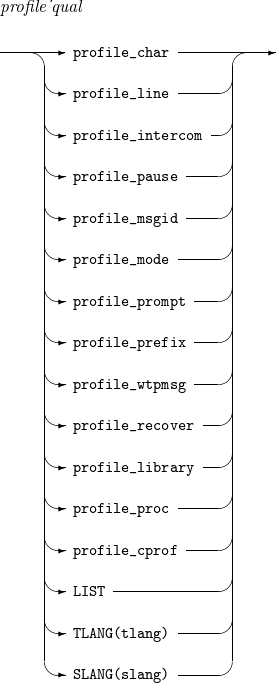













| Item | Description |
|---|---|
tlang |
Terminal output message language. For syntax check only. |
slang |
SYSOUT output message language. For syntax check only. |
char |
Character to be used to delete the previous character entered. For syntax check only. |
line |
Character to be used to delete the previous line entered. For syntax check only. |
prefix |
Prefix to be added to a data set name. |
library |
Expansion library index. For syntax check only. |
proc |
Command procedure data set. For syntax check only. |
cprof |
Command profile data set. For syntax check only. |
Operands
The following table describes the operands mentioned previously.
| Operand | Description |
|---|---|
CHAR (C) |
Specifies the character to use to delete the previous character entered. For syntax check only. |
NOCHAR (NOC) |
Specifies that no character is to be used for character deletion. For syntax check only. |
LINE (LIN) |
Specifies the character to use to delete the previous line entered. For syntax check only. |
NOLINE (NOLIN) |
Specifies that no character is to be used for line deletion. For syntax check only. |
INTERCOM (I) |
Receives messages from other terminals. For syntax check only. |
NOINTERCOM (NOI) |
Rejects messages from other terminals. For syntax check only. |
PAUSE (PA) |
Specifies that you are to be asked if you want message details displayed. For syntax check only. |
NOPAUSE (NOPA) |
Specifies that you are not to be asked if you want message details displayed. For syntax check only. |
MSGID (MS) |
Displays a message with the ID. For syntax check only. |
NOMSGID (NOMS) |
Displays a message without the ID. For syntax check only. |
MODE (MO) |
Displays a mode message regardless of whether the mode has been changed or not. For syntax check only. |
NOMODE (NOMO) |
Displays a mode message when the mode has been changed. For syntax check only. |
PROMPT (PROM) |
Prompts you for invalid parameters. For syntax check only. |
NOPROMPT (NOPROM) |
Does not prompt you for invalid parameters. For syntax check only. |
PREFIX (PRE) |
Specifies the prefix to add to the data set name. |
NOPREFIX (NOPRE) |
Specifies no prefix is to be added to the data set name. |
WTPMSG (W) |
Displays the message for the route code 11 of a WTO message. For syntax check only. |
NOWTPMSG (NOW) |
Does not display the message for the route code 11 of a WTO message. For syntax check only. |
RECOVER (R) |
Enables the checkpoint recover option of the EDIT command. For syntax check only. |
NORECOVER (NOR) |
Does not enable the checkpoint recover option of the EDIT command. For syntax check only. |
LIBRARY (LIB) |
Uses an expansion library. For syntax check only. |
NOLIBRARY (NOLIB) |
Does not use the expansion library. For syntax check only. |
PROC |
Allocates the command procedure data set to the library. For syntax check only. |
NOPROC |
Does not allocate the command procedure data set to the library. For syntax check only. |
CPROF (CP) |
Specifies the command profile data set. For syntax check only. |
LIST (LIS) |
Displays the user profile settings in the terminal window. For syntax check only. |
TLANG (TL) |
Specifies the terminal output message language. For syntax check only. |
SLANG (SL) |
Specifies the SYSOUT output message language. For syntax check only. |
Example
The following example uses the PROFILE command.
PROFILE NOPREFIX
56. PRTFILE Command
Prints the content of a data set with a print device.
Syntax
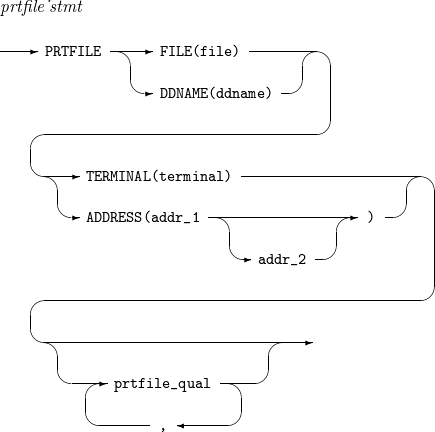

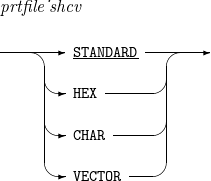




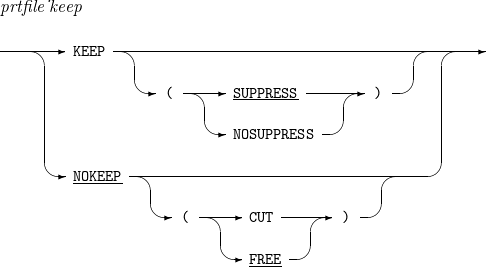

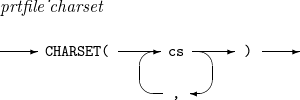
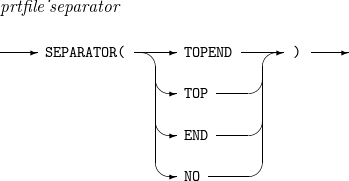

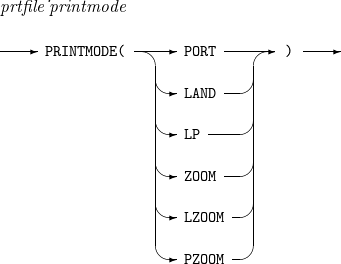
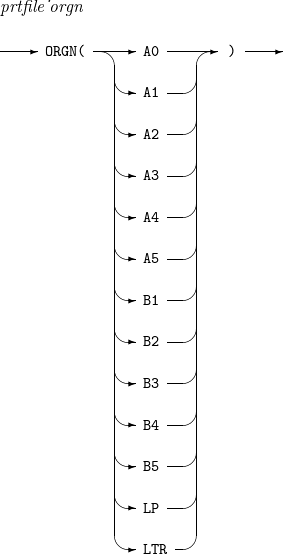
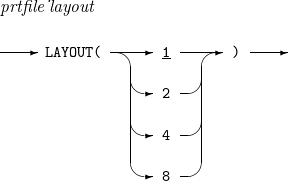



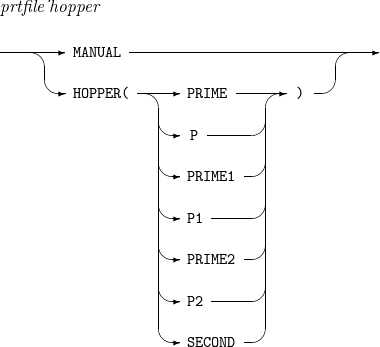
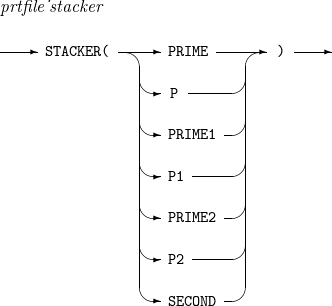



| Item | Description |
|---|---|
file |
Name of a data set whose content is to be printed. |
ddname |
DD name of the data set whose content is to be printed. |
terminal |
Name of a storage device equivalent to a print device. |
addr_1 |
Network address of the printer. For syntax check only. |
addr_2 |
Name of a CFCIII memory card. For syntax check only. |
reqname |
Print request name. For syntax check only. |
EXTRA |
Option to print data greater than 20 MB. For syntax check only. |
l_from |
Row in which to start printing. For syntax check only. |
l_to |
Row up to which to print. For syntax check only. |
overlay |
Form overlay module identifier. |
ovcopies |
Number of copies on which to print the forms overlay. For syntax check only. |
copies |
Number of copies. For syntax check only. |
skip |
Line spacing value. For syntax check only. |
note |
Notes to print along with a separator. |
c_from |
Column in which to start printing. For syntax check only. |
c_to |
Range of columns to print. For syntax check only. |
form |
Line feed control image identifier. For syntax check only. |
p_lines |
Maximum number of rows to print on each page. For syntax check only. |
p_lpi |
Maximum lines per inch (LPI) to print. For syntax check only. |
pl_from |
Left edge of the row range of the output destination. For syntax check only. |
pl_to |
Right edge of the row range of the output destination. For syntax check only. |
pc_from |
Left edge of the column range of the output destination. For syntax check only. |
pc_to |
Right edge of the column range of the output destination. For syntax check only. |
m_top |
Margin to be left at the top of each printed page. For syntax check only. |
m_bottom |
Margin to be left at the bottom of each printed page. For syntax check only. |
cs |
USC, character set, additional character set, or character arrangement table identifier. For syntax check only. |
bind_w |
Bind width. For syntax check only. |
bind_x |
X axis for the default page orientation. For syntax check only. |
bind_y |
Y axis for the default page orientation. For syntax check only. |
group |
Network group number. For syntax check only. |
Operands
The following table describes the operands mentioned previously.
| Operand | Description |
|---|---|
FILE |
Specifies the name of the data set whose content is to be printed. |
DDNAME |
Specifies the DD name of the data set whose content is to be printed. |
TERMINAL |
Specifies the name of a storage device equivalent to a print device. The TERM_CLASS section of the tso subject in OpenFrame Configuration is referenced to determine the output class associated with this operand. |
ADDRESS |
Specifies the network address of the printer and the CFCIII memory card. For syntax check only. |
REQNAME |
Specifies the print request identifier. For syntax check only. |
EXTRA |
Specifies that data greater than 20 MB is to be printed. For syntax check only. |
LINE |
Specifies the range of rows to be printed. For syntax check only. |
OVERLAY |
Specifies the form overlay module identifier. |
OVCOPIES |
Specifies the number of copies on which to print the forms overlay. For syntax check only. |
COPIES |
Specifies the number of copies to be printed. For syntax check only. |
SKIP |
Specifies line spacing. For syntax check only. |
NOCONVERT |
Does not convert an invalid character to a blank space. For syntax check only. |
IMAGEDENSITY |
Specifies the pixel density for the CFCIII memory card. For syntax check only. |
NOTE |
Prints the specified notes along with a separator. |
STANDARD |
Does not convert the input data. For syntax check only. |
HEX |
Converts the input data to hexadecimal data. For syntax check only. |
CHAR |
Specifies more font sizes to use for printing. For syntax check only. |
VECTOR |
Prints vector data greater than 32 KB. For syntax check only. |
COLUMN |
Specifies the range of rows to print. For syntax check only. |
FORM |
Specifies the line feed control image identifier. For syntax check only. |
PAGELEN |
Specifies the maximum number of rows and LPI to print on a page. For syntax check only. |
PLINE |
Specifies the range of rows for the output destination. For syntax check only. |
PCOLUMN |
Specifies the range of columns for the output destination. For syntax check only. |
KEEP |
Prints data in the next line if the data exceeds the specified range of columns in a given line. For syntax check only. |
NOKEEP |
Does not print data in the next line if the data exceeds the specified range of columns in a given line. For syntax check only. |
MARGIN |
Specifies the margin to be left at the top and bottom of the printed page. For syntax check only. |
CHARSET |
Specifies the USC, character set, additional character set, or character arrangement table identifier. For syntax check only. |
SEPARATOR |
Specifies the position of the separator. For syntax check only. |
SHEETSIZE |
Specifies the paper size.
|
PRINTMODE |
Specifies the print mode.
|
ORGN |
Specifies the original paper size when you reduce the page size for printing. For syntax check only. |
LAYOUT |
Specifies the number of forms on each printed page when you reduce the page size for printing. For syntax check only. |
PRTAREA |
Specifies what to do outside the print area. For syntax check only. |
BIND |
Specifies the binding orientation, the number of columns to be shifted to the right, and the default print orientation. For syntax check only. |
SIDE |
Specifies whether to print on both sides or not.
|
MANUAL |
Specifies that paper is loaded manually. For syntax check only. |
HOPPER |
Specifies the input hopper. For syntax check only. |
STACKER |
Specifies the output hopper. For syntax check only. |
NETWORK |
Specifies the network type that the CFCIII device uses. For syntax check only. |
COMPRESS |
Specifies the compression method for the data set sent from the CFCIII device to a fax machine. For syntax check only. |
MSG |
Displays the print start message and the print end message For syntax check only. |
NOMSG |
Does not display the print start message and the print end message. For syntax check only. |
Example
The following example uses the PRTFILE command.
PRTFILE FILE('USER01.SEQ.FILE') TERMINAL(WTR1)
57. PUTOVL Command
Obtains the form overlay pattern from a data set. For syntax check only.
Syntax

58. RELEASE Command
Resumes executing a task that has been on hold. For syntax check only.
Syntax

59. RENAME Command
Changes the name of data set or PDS member names.
Syntax

| Item | Description |
|---|---|
old_name |
Name of input data set. To change the PDS member name, write the member name in parentheses after the PDS name. |
new_name |
Name of output data set. |
Operands
The following table describes the operands mentioned previously.
| Operand | Description |
|---|---|
ALIAS |
Adds alias to PDS member. For syntax check only. |
Example
The following example uses the RENAME command.
RENAME 'USER01.SEQ.IFILE' 'USER01.SEQ.OFILE'
60. RNMFILE Command
Renames a data set or a PDS member.
Syntax

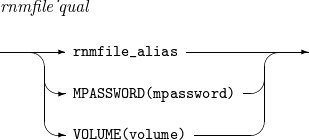

| Item | Description |
|---|---|
src_dsname |
Name of an input data set. To rename a PDS member, specify the PDS name first and then the member name enclosed by the parentheses. |
dst_dsname |
Name of an output data set. |
mpassword |
Password required to access a Gem file member. For syntax check only. |
volume |
Serial number of the volume that contains the input data set. |
Operands
The following table describes the operands mentioned previously.
| Operand | Description |
|---|---|
MPASSWORD (M) |
Specifies the password required to access a Gem file member. For syntax check only. |
VOLUME (V) |
Specifies the volume serial number for the data set. This operand is valid only when the data set is not cataloged. |
NOALIAS (N) |
Renames a data set or a PDS member. |
ALIAS (A) |
Creates an alias for the PDS member. For syntax check only. |
Example
The following example uses the RNMFILE command.
RNMFILE 'USER01.SEQ.IFILE' 'USER01.SEQ.OFILE' VOLUME(VOL1)
61. RUN Command
DSN Subcommand. Runs use applications.
|
For more information about the RUN command, refer to the description about configuring commands in "3.8 IKJEFT01" of OpenFrame Utility Reference Guide. |
62. SEND Command
Sends messages to the console of a system. The messages can be viewed through OpenFrame Manager or tconmgr.
Syntax

| Item | Description |
|---|---|
parameters |
Specifies messages to send to the console. |
Example
The following example uses the SEND command.
SEND 'TEST MESSAGE'
63. SMCOPY Command
Copies all or part of a stream or data set to another stream or data set.
Syntax

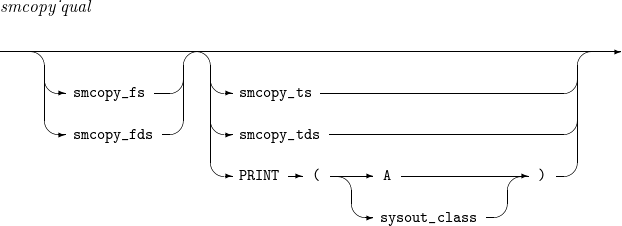





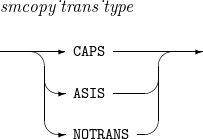
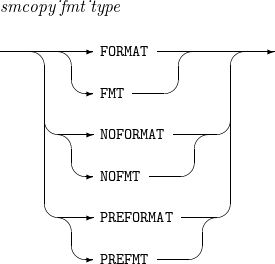
| Item | Description |
|---|---|
sysout_class |
SYSOUT class. For syntax check only. |
start_line |
Line to start copy. For syntax check only. |
stop_line |
Line to end copy. For syntax check only. |
fstream_name |
Stream name to input. For syntax check only. |
fdsname |
Name of data set to copy. |
tstream_name |
Name of output stream. For syntax check only. |
tdsname |
Name of data set to copy. |
Operands
The following table describes the operands mentioned previously.
| Operand | Description |
|---|---|
FROMSTREAM (FS) |
For syntax check only. |
FROMDATASET (FDS) |
Specifies the name of data set that includes the information to copy. |
TSOOUT |
For syntax check only. |
For syntax check only. |
|
TODATASET (TDS) |
Specifies the name of data set that includes the information to copy. |
TOSTREAM (TS) |
For syntax check only. |
CAPS |
For syntax check only. |
ASIS |
For syntax check only. |
NOTRANS |
For syntax check only. |
FORMAT (FMT) |
For syntax check only. |
NOFORMAT (NOFMT) |
For syntax check only. |
PREFORMAT (PREFMT) |
For syntax check only. |
LINE |
For syntax check only. |
Example
The following example uses the SMCOPY command.
SMCOPY FROMDATASET(TEST1(MEM1)) TODATASET(TEST2(MEM2))
64. SNDTMSG Command
Sends messages to a specified workstation connected to an application or AIM.
Syntax
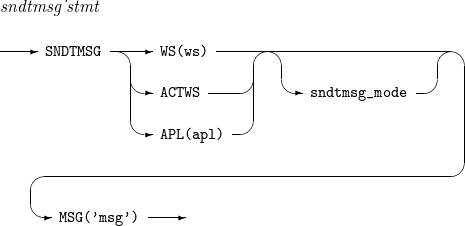

| Item | Description |
|---|---|
ws |
Name of a workstation connected to AIM. |
apl |
Name of an application. |
msg |
Message to send. |
Operands
The following table describes the operands mentioned previously.
| Operand | Description |
|---|---|
WS |
Specifies an AIM-connected workstation to send messages to. |
ACTWS |
Specifies that messages are to be sent to all workstations connected to AIM. |
APL |
Specifies an application to send messages to. For syntax check only. |
MSG |
Specifies a message to send. It must be enclosed by single quotation marks (‘ ’). |
MODE |
Specifies the message type.
|
Example
The following example uses the SNDTMSG command.
SNDTMSG WS(OIVPWS01) MSG('TESTMSG_001')
SNDTMSG WS(OIVPWS01) MODE(URG) MSG('TESTMSG_002')
SNDTMSG ACTWS MSG('TESTMSG_003')
SNDTMSG ACTWS MODE(EMG) MSG('TESTMSG_004')
65. SRTDS Command
Aligns an input data set or selects specific records and saves the result in the output data set.
Syntax
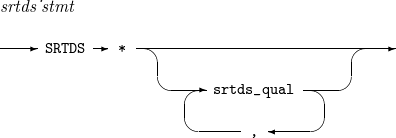
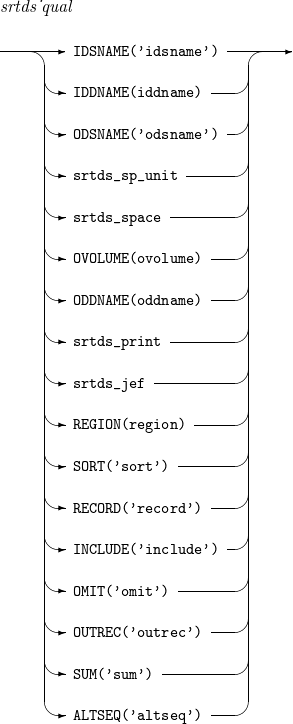


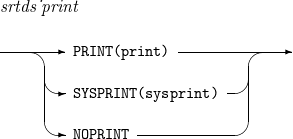

| Item | Description |
|---|---|
idsname |
Name of an input data set. |
iddname |
DD name of an input data set. |
odsname |
Name of an output data set. |
ovolume |
Serial number of the volume that contains the output data set. |
oddname |
DD name of an output data set. |
region |
Size of memory used to align the input data set. For syntax check only. |
sort |
Operand of the SORT command. For more information, refer to OpenFrame SORT Utility Reference Guide. |
record |
Operand of the RECORD command. For more information, refer to OpenFrame SORT Utility Reference Guide. |
include |
Operand of the INCLUDE command. For more information, refer to OpenFrame SORT Utility Reference Guide. |
omit |
Operand of the OMIT command. For more information, refer to OpenFrame SORT Utility Reference Guide. |
outrec |
Operand of the OUTREC command. For more information, refer to OpenFrame SORT Utility Reference Guide. |
sum |
Operand of the SUM command. For more information, refer to OpenFrame SORT Utility Reference Guide. |
altseq |
Operand of the ALTSEQ command. For more information, refer to OpenFrame SORT Utility Reference Guide. |
avblock |
Average block length in bytes. |
quantity |
Size of the initial volume space to be allocated to an output data set. |
increment |
Size of the increment volume space to allocate dynamically when more space is needed for creating the output data set. |
File that contains the message to print. For syntax check only. |
|
sysprint |
Message output class. |
Operands
The following table describes the operands mentioned previously.
| Operand | Description |
|---|---|
IDSNAME (IDSN) |
Specifies the name of an input data set. |
IDDNAME (IDDN, IDD) |
Specifies the DD name of the input data set. |
ODSNAME (ODSN) |
Specifies the name of an output data set. |
OVOLUME (OVOL) |
Specifies the serial number of the volume that contains the output data set. |
ODDNAME (ODDN, ODD) |
Specifies the DD name of the output data set. |
REGION |
Specifies the size of memory used to align the input data set. For syntax check only. |
SORT |
Specifies an operand of the SORT command. For more information, refer to OpenFrame SORT Utility Reference Guide. |
RECORD |
Specifies an operand of the RECORD command. For more information, refer to OpenFrame SORT Utility Reference Guide. |
INCLUDE |
Specifies an operand of the INCLUDE command. For more information, refer to OpenFrame SORT Utility Reference Guide. |
OMIT |
Specifies an operand of the OMIT command. For more information, refer to OpenFrame SORT Utility Reference Guide. |
OUTREC |
Specifies an operand of the OUTREC command. For more information, refer to OpenFrame SORT Utility Reference Guide. |
SUM |
Specifies an operand of the OUTREC command. For more information, refer to OpenFrame SORT Utility Reference Guide. |
ALTSEQ |
Specifies an operand of the OUTREC command. For more information, refer to OpenFrame SORT Utility Reference Guide. |
AVBLOCK (AVB) |
Specifies the average block length in bytes. |
SPACE (SPA) |
Specifies the size of the volume space to allocate to the output data set. |
Specifies the file that contains the message to print. For syntax check only. |
|
SYSPRINT |
Specifies the message output class. |
NOPRINT |
Does not print the message. For syntax check only. |
JEF |
Enables the Chinese alignment function. For syntax check only. |
NOJEF |
Does not enable the Chinese alignment function. For syntax check only. |
Example
The following example uses the SRTDS command.
SRTDS * IDDN(INPUT) ODDN(OUTPUT) SORT('FIELDS=(12,4,ZD,D)')
66. STATUS Command
Outputs the status of the batch JOB to the terminal. For syntax check only.
Syntax

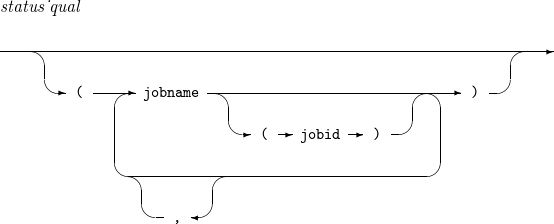
| Item | Description |
|---|---|
jobname |
Name of the batch JOB whose status user wants to know. For syntax check only. |
jobid |
ID of the batch JOB whose status user wants to know. For syntax check only. |
Example
The following example uses the STATUS command.
STATUS TEST(JOB00001)
67. STPWTR Command
Stops a writer that is printing, queued, or on hold. For syntax check only.
Syntax

69. SUBMIT Command
Submits a batch job to TJES. For information about TJES, refer to OpenFrame TJES Guide.
Syntax

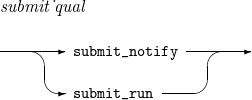


| Item | Description |
|---|---|
dataset |
Name of a JCL data set to use. |
Operands
The following table describes the operands mentioned previously.
| Operand | Description |
|---|---|
NOTIFY (NOT) |
Notifies job completion to the terminal. For syntax check only. |
NONOTIFY (NON) |
Does not notify job completion to the terminal. For syntax check only. |
RUN (R) |
Runs the job. For syntax check only. |
NORUN (NOR) |
Holds the job. For syntax check only. |
Example
The following example uses the SUBMIT command.
SUBMIT 'SYS1.JCLLIB(SORT01)'
70. VERIFY Command
Updates the catalog information of a VSAM data set.
Syntax

| Item | Description |
|---|---|
dsname |
Name of a cluster or a component. |
ddname |
DD name of a cluster or a component. |
Operands
The following table describes the operands mentioned previously.
| Operand | Description |
|---|---|
DATASET (DS) |
Specifies the name of a cluster or a component. |
FILE (F) |
Specifies the DD name of a cluster or a component. |
Example
The following example uses the VERIFY command.
VERIFY FILE(IN)
71. WAIT Command
Suspends execution of a script until a specified event is raised. If the event is also specified the EVENT command, the WAIT command suspends executing the script from the monitoring start time until the event is raised.
If the event is not specified by the EVENT command, the WAIT command immediately suspends executing the script from until the event is raised. In this case, the command suspends execution as if it were immediately preceded by the EVENT command with STACK(NO) specified.
The WAIT command lists the event occurrence history saved in a stack. If you registered the event with STACK(YES) specified in the EVENT command, the WAIT command retrieves information about the event occurrence from the stack. If you registered the event with STACK(NO) specified in the EVENT command, the WAIT command simply lists the event occurrence.
When an event occurrence is retrieved or listed, information about the event is saved as control variables such as &SYS#EVENT. For more information about control variable, refer to Command Procedures.
Syntax












| Item | Description |
|---|---|
time |
Time in the hh.mm format.
|
date |
Date. For syntax check only. |
week |
Day of the week. For syntax check only. |
message |
Message string to identify a message. The string identifies the message if the string matches the beginning bytes of the message. If this string is in the format '%.string', the string identifies the message if the string matches the middle bytes of the message. |
dspmessage |
Message string to display on the event wait status screen. For syntax check only. |
sss |
Wait time in seconds. |
mmm |
Wait time in minutes. |
readyjobname |
Name of a job. For syntax check only. |
endjobname |
Name of a job. |
msgid |
Identifier of a message. |
system |
System event. For syntax check only. |
userevent |
User event. For syntax check only. |
dataset |
Data set. For syntax check only. |
mount |
Volume. For syntax check only. |
ondevice |
Floppy disk. For syntax check only. |
sysout |
System output. For syntax check only. |
Operands
The following table describes the operands mentioned previously.
| Operand | Description |
|---|---|
TIME |
Suspends execution until the specified time. |
DATE |
Suspends execution until the specified date. For syntax check only. |
WEEK |
Suspends execution until the specified day. For syntax check only. |
MESSAGE |
Suspends execution until the specified message is displayed. |
DSPMESSAGE |
Specifies the message to be displayed on the event wait status screen. For syntax check only. |
INTERVAL |
Suspends execution during the specified time interval. |
READYJOBNAME |
Suspends execution until the specified job starts. For syntax check only. |
ENDJOBNAME (END) |
Suspends execution until the specified job ends. |
MSGID |
Suspends execution until a message with the specified identifier is displayed. |
SYSTEM |
Suspends execution until the specified system event occurs. For syntax check only. |
USEREVENT |
Suspends execution until the specified user event occurs. For syntax check only. |
DATASET |
Suspends execution until the specified data set is created. For syntax check only. |
MOUNT |
Suspends execution until the specified volume is mounted. For syntax check only. |
ONDEVICE |
Suspends execution until the specified floppy disk is ready. For syntax check only. |
SYSOUT |
Suspends execution until printing the specified output completes. For syntax check only. |
Example
The following example uses the WAIT command.
WAIT MSGID(XDX1000I) INTERVAL(5S)



